FY21 Approved Budget
TABLE OF CONTENTS |
INTRODUCTION AND OVERVIEW |
STRUCTURE, POLICY AND PROCESS |
FINANCIAL SUMMARIES |
CAPITAL AND DEBT |
DEPARTMENTAL INFORMATION |
APPENDIX
"As the branch of government closest to the people, we must remain agile and responsive to the changing needs of our community."
-City Manager
Mayor and City Commissioners,
It is my honor and privilege to present a Proposed Balanced Budget for Fiscal Year 2021 (FY21). Development of this budget has tested our ability to innovate as we tackle the significant, immediate economic impacts and reduction of critical revenue sources caused by COVID-19. With the Mayor and City Commission’s direction, we are leaning into the challenges presented during this time of unprecedented change. This fiscal year has been filled with change as we implemented the five-year Strategic Plan and faced adversity related to the impacts of COVID-19 while also listening and supporting the call for racial equity. As City Manager, I am proud of the unwavering focus staff has shown to meet the objectives you set forth to better our community. I am confident that, with your leadership, staff dedication and community support, we are well-positioned to ensure the City of Tallahassee remains a national leader.
Because of our year-round process, the budget remains adaptable, reflects the expectations of the community and allows us to respond to changing needs, while remaining fiscally viable. Amid the challenges brought on by COVID-19, the City has made operational adjustments to protect the workforce and ensure continuous delivery of quality municipal services to the community. Below is a brief list of actions taken in 2020.
- Modified work assignments to ensure continued delivery of critical services during the COVID-19 pandemic. Critical front-line and field staff were placed on rotational schedules, some staff were reassigned to telework, and electric grid operators were sequestered (an action that was recognized internationally).
- In partnership with local healthcare providers, created one of the first COVID-19 drive-through testing sites in Florida, before the first positive case in Leon County.
- Led in public health safety as the first to commission the production and distribution of 25,000 locally made reusable masks at a time when masks were not available.
- Transitioned to virtual public meetings and streamed more than 20 live public meetings, enabling real-time viewership and transparency of government business.
- Voted jointly with Leon County to provide up to $2 million in grants to small businesses and non-profit organizations before CARES Act funding was available.
- Reduced electric utility rates by 27 percent in May, saving customers roughly $6.3 million.
- Implemented a virtual growth management permitting application and inspection process.
- Created online classes for seniors enabling the continued success of our nationally recognized UPSLIDE Friends Connections program for isolated seniors.
- Established a virtual summer internship program that was part of the Tallahassee Future Leaders Academy, which was recognized nationally for its innovation.
- Supported the call for racial equity and justice with a Black Lives Matter street painting at a prominent Southside intersection between the two universities.
While the City responded to the pandemic, the impacts to the FY20 budget were rapidly unfolding and required bold actions. Major revenue sources, including sales tax, gas tax and utilities revenues, were instantly reduced. Initial estimates of $30 to $50 million in impacts were refined to a year-end $21 million total revenue deficit across all our funds. For perspective, the financial impacts from the current crisis on both our FY20 budget and the development of the FY21 budget are on par with the economic downturn of 2007-09.
Facing the significant challenge of providing for a balanced budget at year-end, we followed a three-pronged approach. First, sound expenditure reductions were initiated to include delaying non-critical expenses, recognizing savings related to suspended programs, suspending travel and adjusting work assignments as necessary, while ensuring our commitment to avoiding layoffs or furlough of full time and OPS employees. Second, utilizing select reserve funds for non-recurring revenue and expenditures. Third, accounting for emergency related expenses connected to staff support and personal protective equipment for possible FEMA reimbursement or CARES Act funding.
These service and financial actions will extend well beyond 2020. With the Mayor and Commission’s leadership and direction, greater opportunities for citizens to lead change and participate in solutions are underway, including:
- A Citizens Police Review Board, initiated by the City Commission, that will review and provide recommendations on completed internal affairs investigations, incidents that have been presented to a grand jury and those involving the alleged use of excessive or deadly force.
- The Tallahassee Police Department’s Citizens Advisory Council that will aid in strengthening the relationship between law enforcement and the community.
- The Youth Citizens’ Advisory Council, another public safety initiative of the police department, focused on developing an open dialogue about issues impacting Tallahassee’s younger population.
Important Features of the Budget
In difficult economic times, the strength of our financial position and ability to both plan and adapt the organization is critical. The reaffirmation of AA level credit ratings by the leading rating agencies is a confirmation of the organization’s strong fiscal standing and financial viability. Components highlighted in the ratings review include efficient and effective operations, infrastructure investment, commitment to fair rates and fees and support for general government services, such as police, parks, roads and sidewalks.
While governments the world over grapple with budget cuts, we at the City recognize that our actions directly impact the local economy. Thus, our approach for FY21 has focused on multiple elements, including using our capital resources to continue investing in our infrastructure, and balancing the budget with short-term, one-time actions that provide funding relief for revenue losses but position the City to return to normal operations at the first sign of recovery.
The proposed capital budget for FY21 totals $150.6 million and maintains sound investment in infrastructure. It includes a total investment of $17.2 million for public infrastructure projects; $7.8 million for new technology, including $1.3 million dedicated to public safety; $30.7 million for the Airport; and $71.2 million for the City’s six utilities. To ensure capital projects meet community needs and are fiscally responsible, planning and reviewing is a year-round process, allowing the flexibility to update cash needs as phases of each project are completed.
The total FY21 proposed City operating budget is $731.1 million. Within that, the proposed General Fund budget for FY21 is $161.6 million and holds the City’s property tax rate constant at 4.1 mills. The millage rate is the lowest of the 25 largest cities in Florida and has been the same for five years. Recognizing the time citizens need for economic recovery, the City suspended the updated Fire Services Fee change until FY22. The proposed budget continues our investment in priority areas identified by the Commission and ensures that funding is allocated for goals and objectives identified in the strategic plan, including:
- Connecting disconnected youth with educational and employment opportunities. The success of the City’s TEMPO program, which is helping to address the impacts of poverty and crime, is unprecedented. The program has engaged more than 1,000 participants with a zero percent recidivism to date. The City is on track to reduce the percentage of disconnected youth citywide by 30 percent and impact the lives of more than 2,100 young adults by 2024.
- Ensuring our workforce is diverse, inclusive and represents the demographics of the community we serve. The newly created Office of Diversity and Inclusion is leading efforts to ensure continued development and implementation of the City’s diversity, equity and inclusion initiatives focused on recruiting, retaining, training and promoting the best and most diverse talent available.
Providing programs that address the impacts of poverty and help create an equitable future for all. This includes law enforcement and judicial system support programs, such as restorative and juvenile justice, conflict resolution, community-oriented policing and victim advocacy. It also includes community-oriented programs like housing assistance, resiliency, sustainability, transit, athletics and recreation, as well as targeted programs like the Tallahassee Future Leaders Academy, Community Human Services Partnership, Neighborhood First Planning and more.
As the branch of government closest to the people, we must remain agile and responsive to the changing needs of our community. The City of Tallahassee’s FY21 balanced budget demonstrates our commitment to reliable, quality service delivery and financial responsibility during a critical time for this community. With strong leadership, responsible management, efficient use of resources and the hard work, innovation and integrity of City employees, we will successfully sustain this community while overcoming the challenges set forth by the worldwide pandemic.
Sincerely,

Reese Goad
City Manager
1.1 Mission
Return to Top
The City of Tallahassee, through workshops, surveys, commission retreats and more, has developed the following vision, mission, critical success factors, values and priorities. These are used as the basis for the performance measurement process that each department has implemented. Over the coming year, the measures will be reviewed and evaluated to ensure they are aligned with the City of Tallahassee’s vision, mission, critical success factors, values and priorities.
Mission:
To be the national leader in the delivery of public service.
Vision:
A creative capital city that supports a strong community with vibrant neighborhoods; an innovative economic and educational hub serving a diverse and passionate people, protecting our natural resources and preserving our unique character.
Values:
- Honor public trust through ethical behavior.
- Provide exceptional citizen service.
- Lead with integrity at every level.
- Collaborate to reach common goals.
- Invest in employee excellence.
- Promote equity and celebrate diversity.
1.2 Strategic Plan
In preparation for its 200th year in 2024, the City developed a comprehensive strategic plan. It was written using citizen engagement, both in-person and online, and with direction from the City Commission. While the budget directs resources for accomplishing one year’s worth of goals and activities, this plan represents the City’s direction for the next five years.
The City’s goals and objectives to be reached by 2024 are detailed below by seven different priority areas. To read the complete 2020-2024 Strategic Plan, click here.
“We are Tallahassee” Video
Objectives & Priorities
This strategic plan sets the course for the City of Tallahassee
to achieve a specific set of priorities, goals, and objectives by
2024. It does so within the context of the community’s longterm
Comprehensive Plan and shapes fiscal policy set forth
within future annual budget documents.
City Priorities
To achieve our vision, the City Commission has identified seven priority areas to guide service efforts over the next five years.
GOAL
To advance the City of Tallahassee as a competitive, innovative, and sustainable regional economic hub.
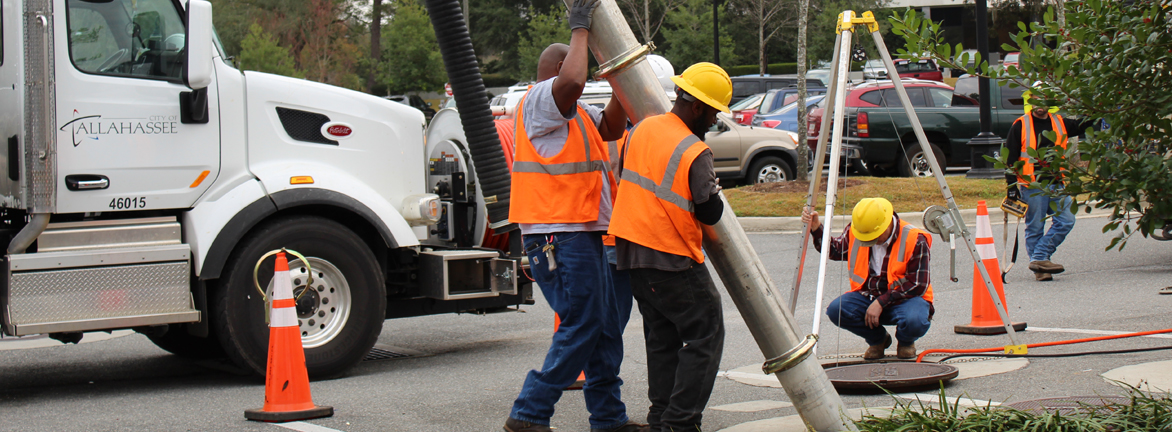
Objective 1A:
Enhance and modernize infrastructure to enable capacity for growth.
- Percent of households in city limits with broadband internet (25 Mbps) coverage. Target: 99%
- Number of brownfield areas assessed, remediated, or redeveloped within the South Monroe corridor.
Target: 20 sites
- Number of electric vehicle (EV) charging stations installed in utility customers’ homes. Target: 500
- Miles of aging wastewater pipes upgraded annually. Target: 5.5 miles
- Complete construction of Customs Facility at Tallahassee International Airport by 2024.
- Invest $25 million through 2024 in stormwater capacity enhancements to improve water quality, and mitigate flooding, in the urban service area.
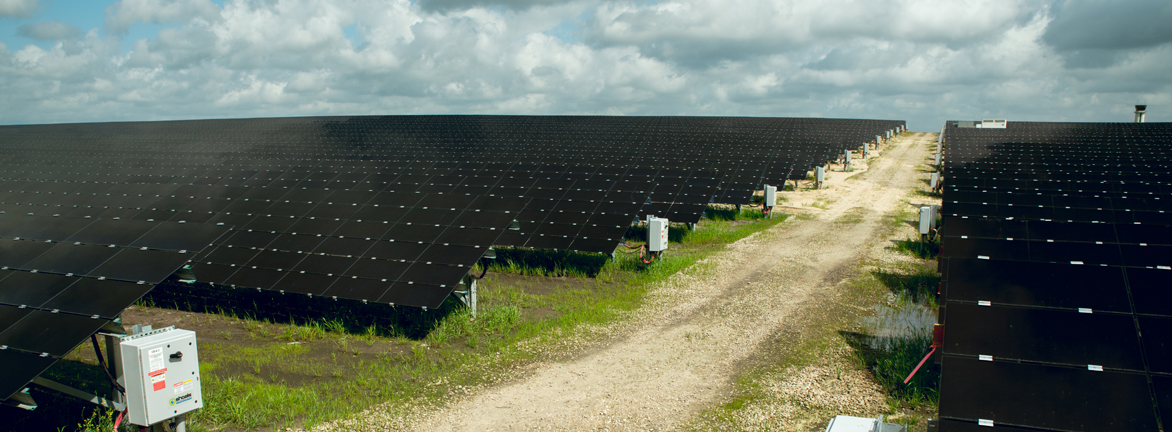
Objective 1B:
Solicit opportunity for new and emerging industries to locate in Tallahassee.
- Percent of employment in targeted industries. Target: 60%
- Number of jobs added to the economy annually.
Target: 2,500 jobs
- Gross Domestic Product of Tallahassee Metropolitan Statistical Area. Target: $15 billion
- Rate of unemployment. Target: Below the State average
- Total annual exports from the Tallahassee Metropolitan Statistical Area. Target: $350 million by 2024
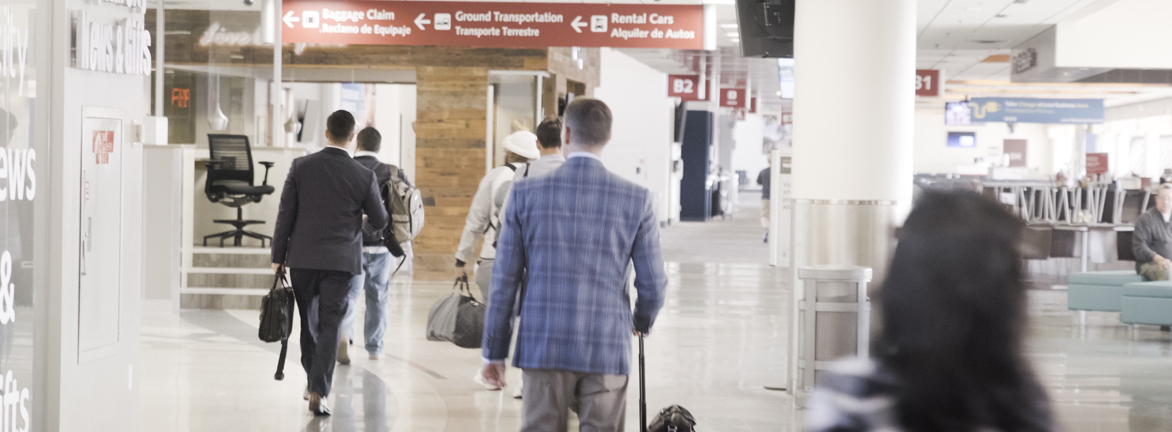
Objective 1C:
Increase Tallahassee International Airport’s economic impact on the region.
- Dollar value of Tallahassee International Airport’s economic impact. Target: $1 billion
- Annual total passenger traffic (enplanements and deplanements). Target: one million
- Annual total cargo (enplaned and deplaned). Target: 22 million pounds
- Acres of land leased near Tallahassee International Airport. Target: 100 acres
GOAL:
To be a leading community partner that actively connects residents to resources that remove economic and social barriers.
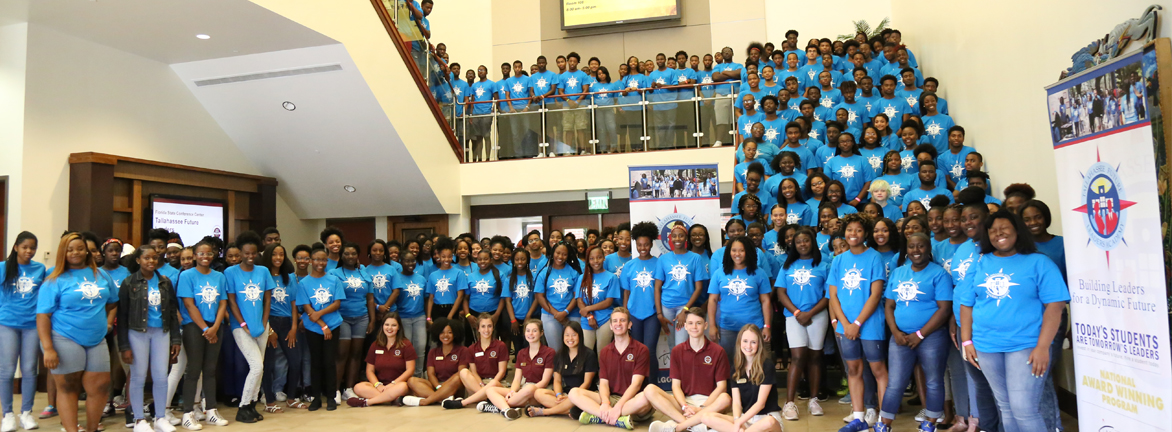
Objective 2A:
Support education, training, and job readiness for target populations.
- Percent reduction of disconnected youth.
Target: 30%
- Number of TFLA participants that have moved on to higher education, trade school, certification programs, or military over a five-year period.
Target: 500
- Number of TEMPO participants enrolled in a technical college or higher education institution over a five-year period.
Target: 150
- Number of TEMPO participants that have found employment paying a “fair” or “living wage” over a five-year period. Target: 100
- Number of TEMPO participants completing a GED over a five-year period. Target: 150
- Percent increase in teen program participation at the Palmer-Munroe Teen Center. Target: 3% annually
Initiatives
- Enhance partnerships with community reentry programs.
- Promote the City’s Explore Program and Junior Cadet Program.
- Host annual job fair.
- Continue providing free bus passes to our area’s K-12 students.
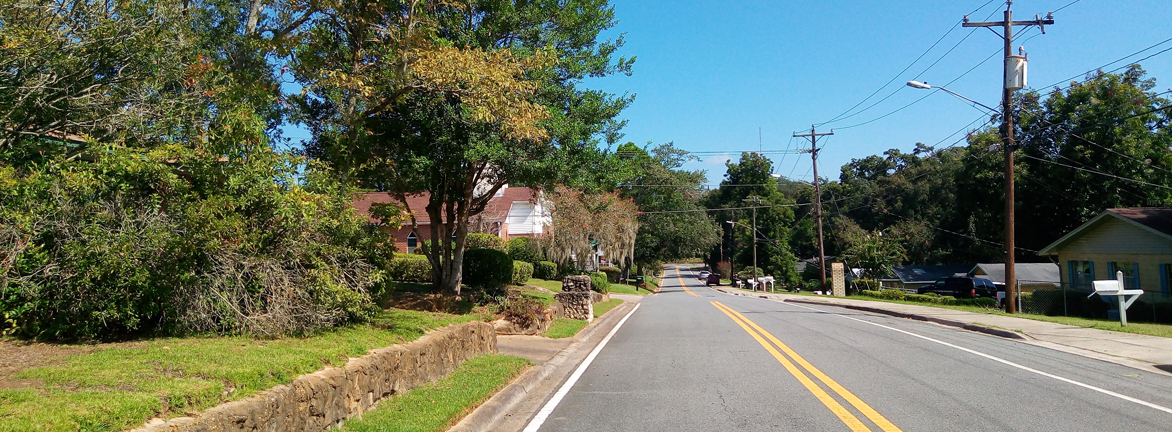
Objective 2B:
Rehabilitate and enhance the existing housing inventory to reduce the cost of living.
- Number of homes served annually by energy efficiency grants, audits, and rebates to improve affordability and reduce homeownership housing costs.
Target: 6,000
- Number of homes rehabilitated and/or receiving emergency repair. Target: 425
Initiatives
- Convert vacant student housing units into affordable housing units by working with Community Land Trust.
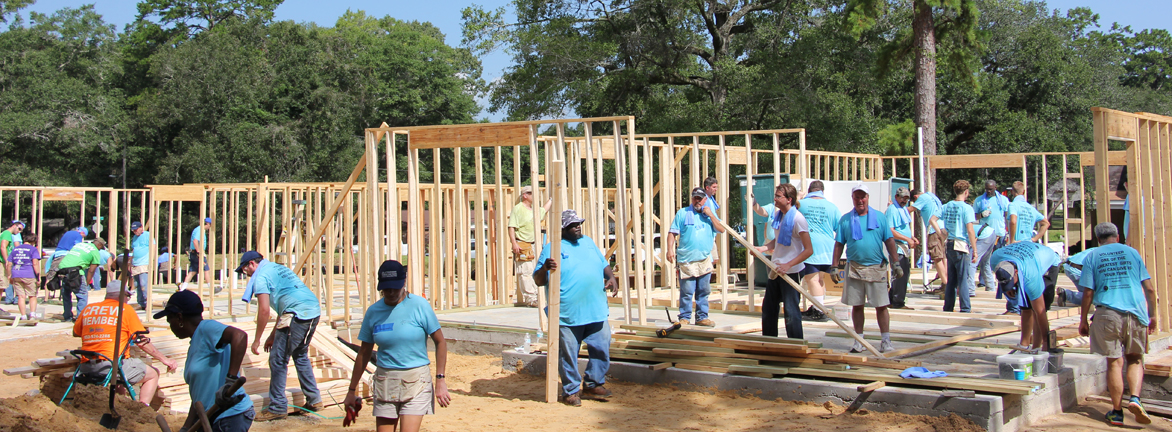
Objective 2C:
Facilitate and encourage the construction of affordable housing units..
- Number of new affordable homes or rental units built through the Community Land Trust. Target: 35
- Number of new homes built as a result of inclusionary housing programs. Target: 60
- Number of Habitat for Humanity homes built by City employees. Target: 10
- Number of down payment assistance grants awarded, creating pathways to home ownership. Target: 125
- Secure funding for Purpose Built Community and redevelopment of an additional 200 dwelling units at the Orange Avenue Housing Complex.
Initiatives
- Increase residential density within City limits.

Objective 2D:
Support community health and wellness initiatives.
- Percent of residents living within 1 mile of a fresh food source. Target: 100%
- Create performance matrix to measure Return on Investment (ROI) for Community Human Service Partnership (CHSP) by 2024.
Initiatives
- Leverage community resources to increase access to recreational
facilities and programs.
- Cultivate partnerships to further the implementation of wellness programs.
GOAL:
To be an impact-focused workforce that is inclusive, pioneering, and technology-driven.
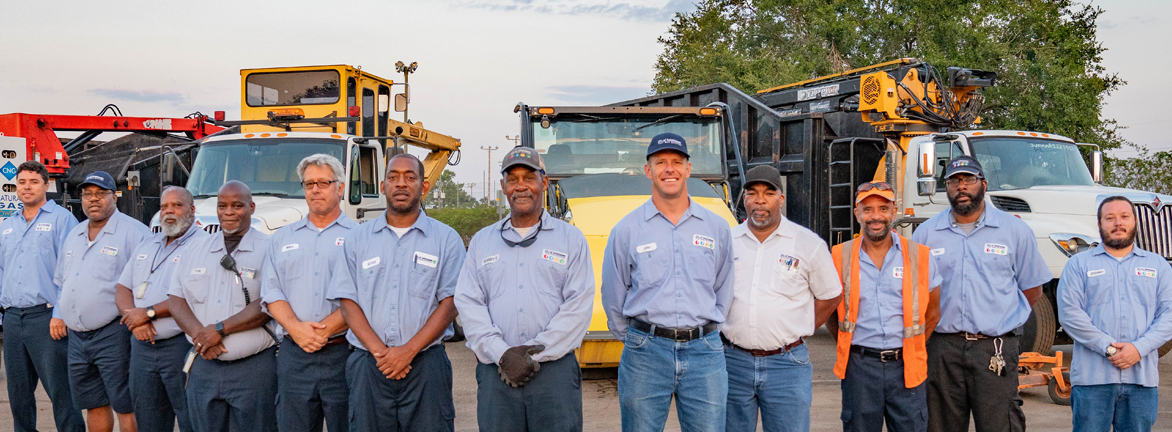
Objective 3A:
Attract, develop, and support the best talent.
- Rate of total employee turnover. Target: 6.5%
- Median number of days to fill a position from advertisement to offer. Target: 60 days
- Rate of employee satisfaction on annual Employee Engagement & Satisfaction surveys. Target: 90%
- Identification of City employees proficient in Spanish or American Sign Language.
- Grow employee participation in professional development programs by 10 percent by 2024.
Initiatives
- Recruit employees from local educational and vocational training centers.
- Have a City workforce that is reflective of community’s demographics.
- Develop and implement a City-wide Talent Development Plan.
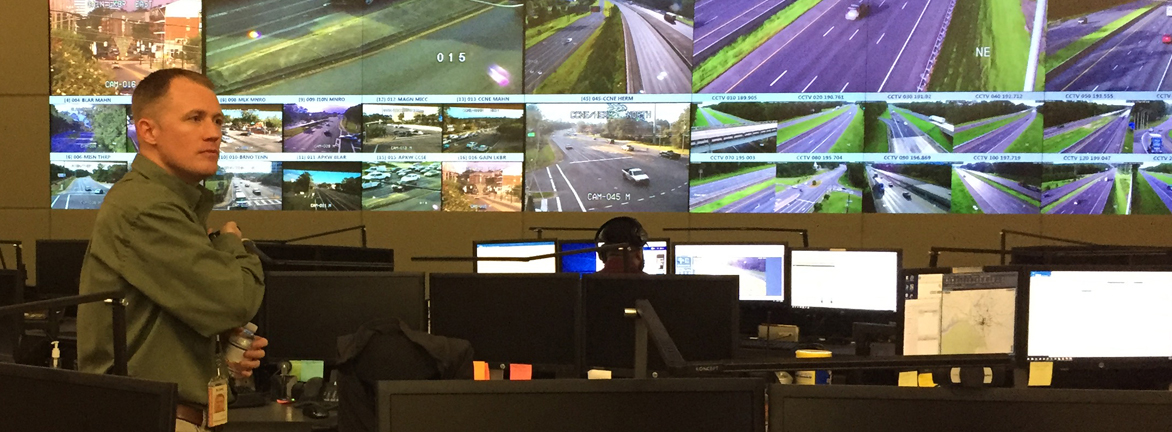
Objective 3B:
Leverage technology to deliver faster, more convenient services.
- Percent of payments received digitally. Target: 80%
- Implement online customer service and inquiry portal by 2022.
Initiatives
- Implement fully paperless internal services.
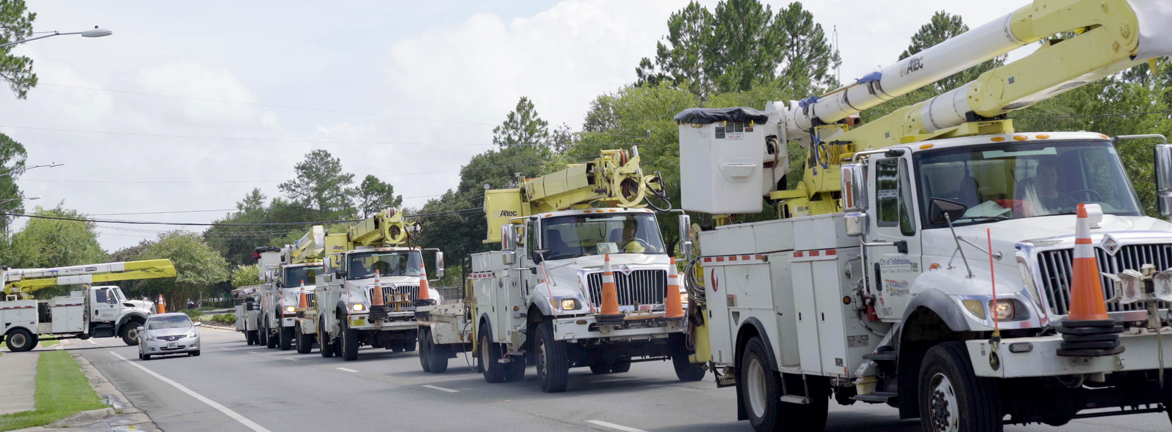
Objective 3C:
Map, analyze, and improve all work processes.
- Rate of availability for City fleet. Target: 96%
- Percent of budget document receiving ”Outstanding” ratings from the Government Financial Officers Association (GFOA). Target: 25%
- Achieve Sterling designation for Human Resources by 2022.
- Attain status as a “Top 100 Fleet.”
Initiatives
- Map, analyze, and enhance all departments’ procedures and processes.
- Evaluate service departments based on the customers they serve.
- Develop customer-centric service model within Procurement.
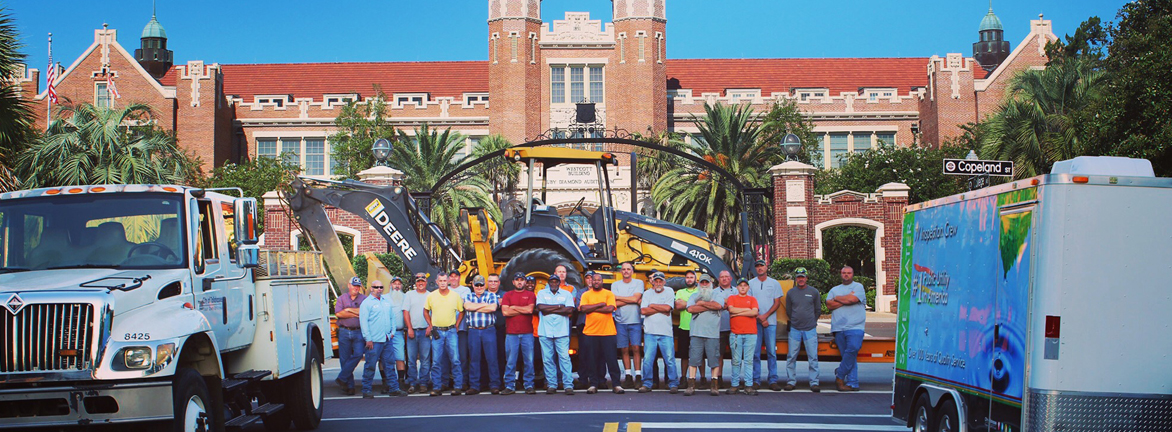
Objective 3D:
Maintain the City’s strong financial standing and fiscal stewardship practices.
- Percent of general employee pension funded. Target: 90%
- Percent increase of annual grant awards. Target: 5%
Initiatives
- Maintain a fully funded deficiency fund, in accordance with City policy.
- Maintain best-in-class municipal “AA” Bond rating.
GOAL:
To be the leading publicly owned utility that supports a growing and progressive community.
To be a city with an efficient public transit network supported by well-connected roads, sidewalks, transit
amenities, and public transportation.
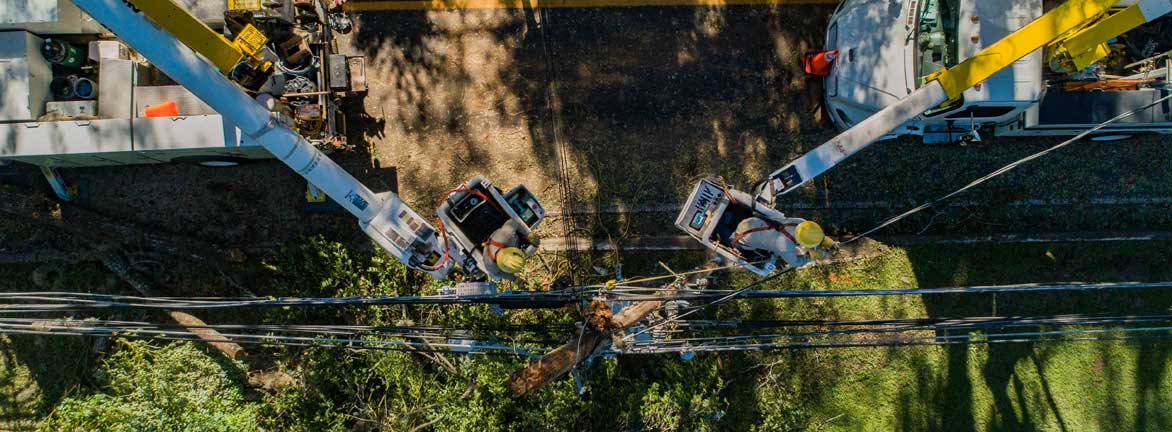
Objective 4A:
Be a leader in utility service delivery.
- Average customer outage response time for electric outages. Target: Less than 40 minutes
- Average customer outage response time for gas problems. Target: Less than 30 minutes
- Rate of availability for utility services (electric, gas, water, and sewer systems). Target: 99%
- Dollars invested in sewer collection system upgrades. Target: $61.3 million Target: 8.5%
- Provide electric and gas utility bills at or below the statewide average.

Objective 4B:
Be a leader in environmental stewardship.
- Percent of electric, hybrid electric, and CNG vehicles within inventory of City’s Light Duty Fleet by 2024.
Target: 25%
- Tonnage of recyclables collected annually. Target: 13,000 tons annually & 75% recycling participation rate
- Develop and adopt the City’s Clean Energy Plan for 2050 by 2024.
- Remain a Top 3 municipal leader in the prevention of sewer spills during the next five years.
- Reduce the number of impaired water bodies.
Initiatives
- Continue the reduction of total greenhouse gas emissions for the City’s electric utility.
- Improve water quality by reducing harmful discharge and runoff.

Objective 4C:
Ensure safe and clean drinking water.
- Win the “Best Tasting Drinking Water in Florida” award.
- Complete construction of new water quality laboratory by 2021.
- Invest $44.9 million in the enhancement and maintenance of the potable water system over the next five years.
- Secure funding to continue the TAPP program over the next five years.
Initiatives
- Maintain best in class water quality.
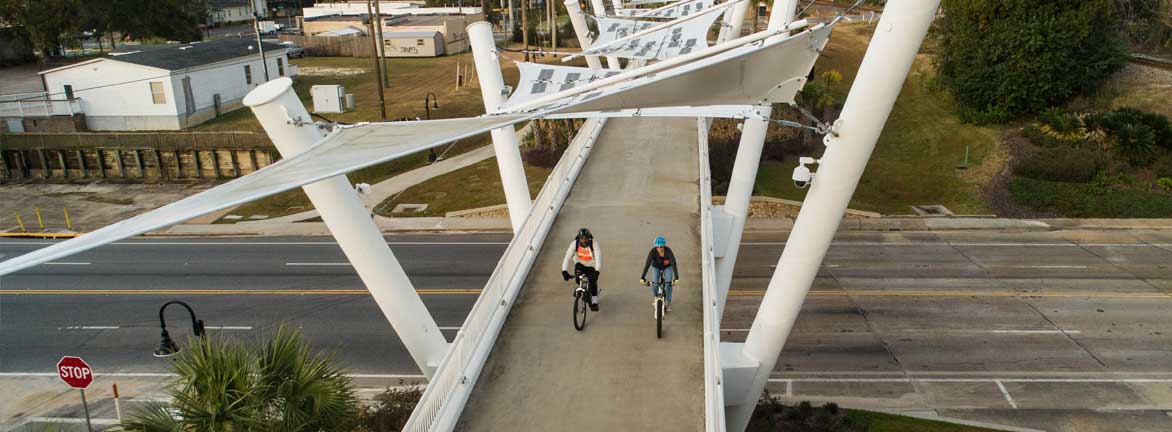
Objective 4D:
Enhance the city’s network of roads, bike lanes, and sidewalks.
- Percent of City-maintained roads rated as “Good,” “Very Good,” or “Excellent.” Target: 70%
- Percent increase of annual grant awards. Target: 5%
- Complete Weems road and mixed-use trail project by 2024.
- Become a “Gold Standard” Biking Community by 2024.
Initiatives
- Increase percentage of residents using alternative modes of transportation to/from work.
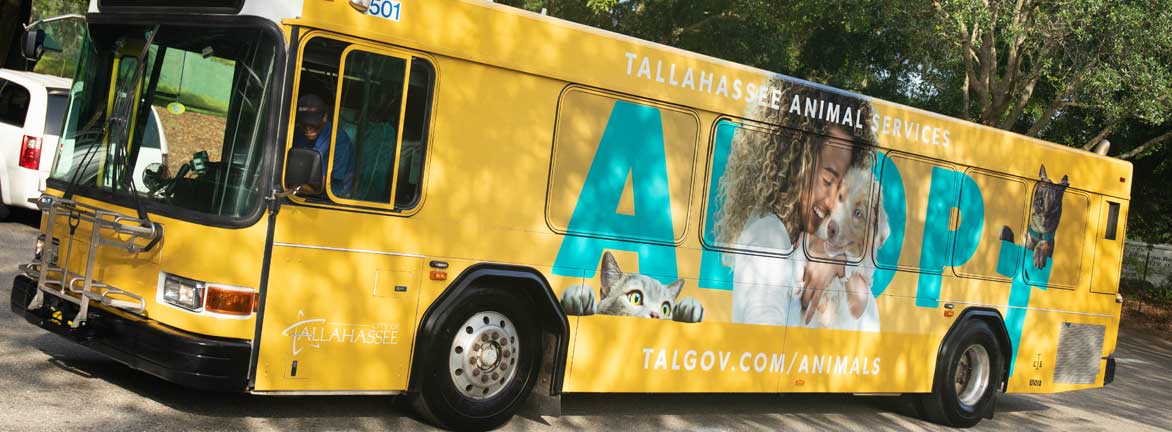
Objective 4E:
Ensure public transit is accessible, efficient, and equitable.
- Rate of on-time transit performance. Target: 90%
- Complete construction of a multi-modal transportation hub at C.K. Steele Plaza by 2022.
- Construction of the South City Transit Center by 2022.
GOAL:
To be a safe, resilient, and inclusive community.

Objective 5A:
Implement proactive community-based solutions to enhance public safety.
- Number of neighborhoods participating in neighborhood watch programs. Target: 45%
- Number of community-oriented policing activities held annually. Target: 35
- Number of Community Liaison Officers deployed. Target: 15
Initiatives
- Increase public and private partnerships for citizen maintained and installed camera technology.
- Increase the number of neighborhoods participating in the Neighborhood Public Safety Initiative.

Objective 5B:
Crime prevention through effective policing and public awareness campaigns.
- Rate of annual success for all TEMPO participants. Target: 10% or less
- Reduce vehicle burglaries through crime prevention and community partnerships to reduce the number of stolen firearms. Target: 15
- Reduce violent crimes by partnering with community leaders and other law enforcement agencies. Target: 10%
Initiatives
- Enhance specialized knowledge needed to address cybercrime.

Objective 5C:
Training and readiness of public safety employees.
- Number of training hours per police officer annually. Target: 3
- Number of emergency preparedness training hours conducted, including training and exercises. Target: 5
Initiatives
- Increase annual community-oriented policing, sensitivity, fair and impartial policing, and de-escalation training for TPD officers.

Objective 5D:
Provide state of the art technology to support public safety initiatives.
- Percent of the City covered by ALS certified fire stations. Target: 100%
Initiatives
- Implementation of license plate reader (LPR) technology at strategic locations in the city to enhance traffic and public safety.
- Enhance City capabilities to proactively detect criminal activity.
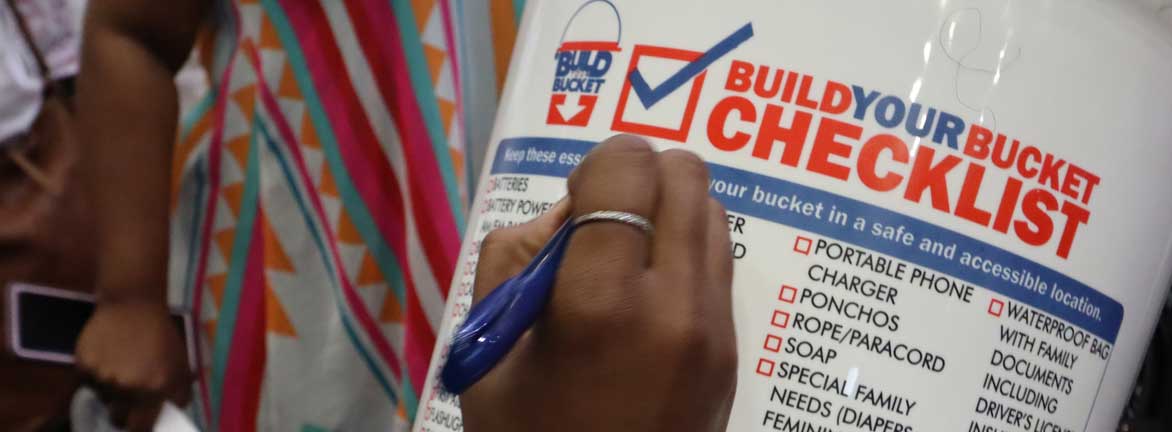
Objective 5E:
Enhance community preparedness initiatives.
- Number of attendees at disaster preparedness events. Target: 1,250
- Number of neighborhoods with PREP plans in-place. Target: 5
- Number of active shooter training seminars annually. Target: 25
- Facilitate annual table-top preparedness exercise for all response agencies.
Initiatives
- Identify faith centers that will serve as potential recovery staging sites for distribution of water, meals, and emergency goods.
- Facilitate annual large-scale community preparedness scenario, integrating all response and medical agencies.
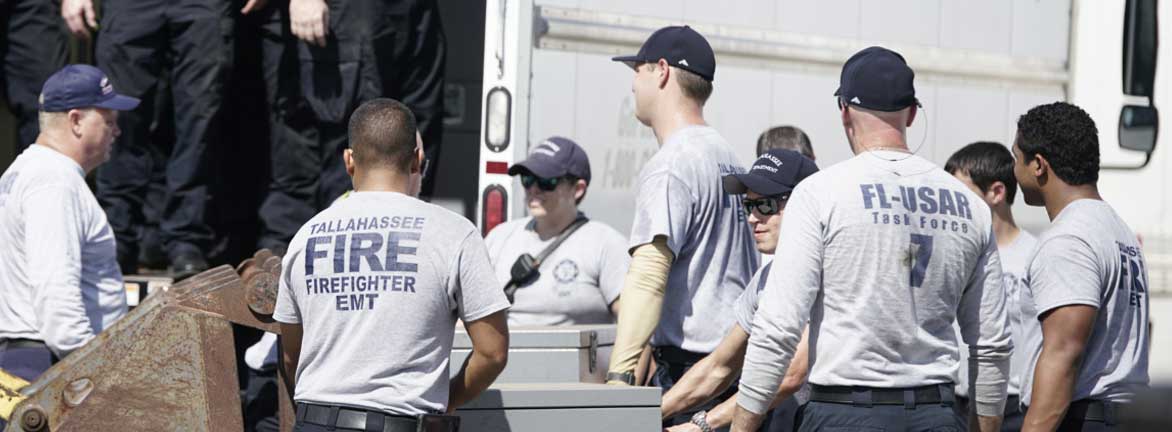
Objective 5F:
Create modern facilities to support community engagement and best-in-class public safety.
- Complete construction and begin operations at the new Public Safety Campus by 2024.
Initiatives
- Increase economic multiplier effect of police headquarters on the community and surrounding neighborhoods.
GOAL:
To enhance public trust through ethical business practices and transparent governance.
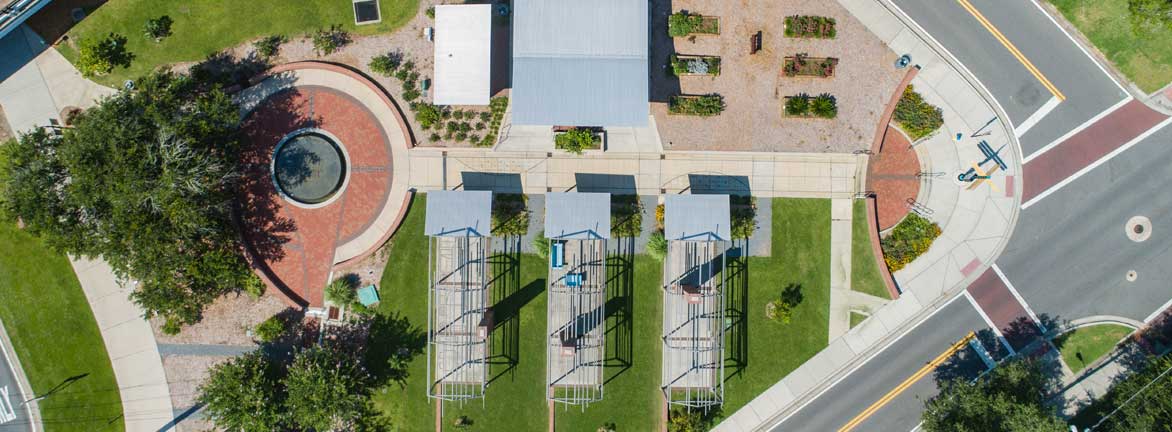
Objective 6A:
Infuse ethical practices into daily operations.
- Rate of compliance for annual employee ethics training. Target: 100%
- Rate of compliance for elected and appointed officials submitting financial disclosures with the State of Florida. Target: 35
- Adopt a No-Gift policy for all City employees by 2024.
Initiatives
- Increase public and private partnerships for citizen maintained and installed camera technology.
- Increase the number of neighborhoods participating in the Neighborhood Public Safety Initiative.
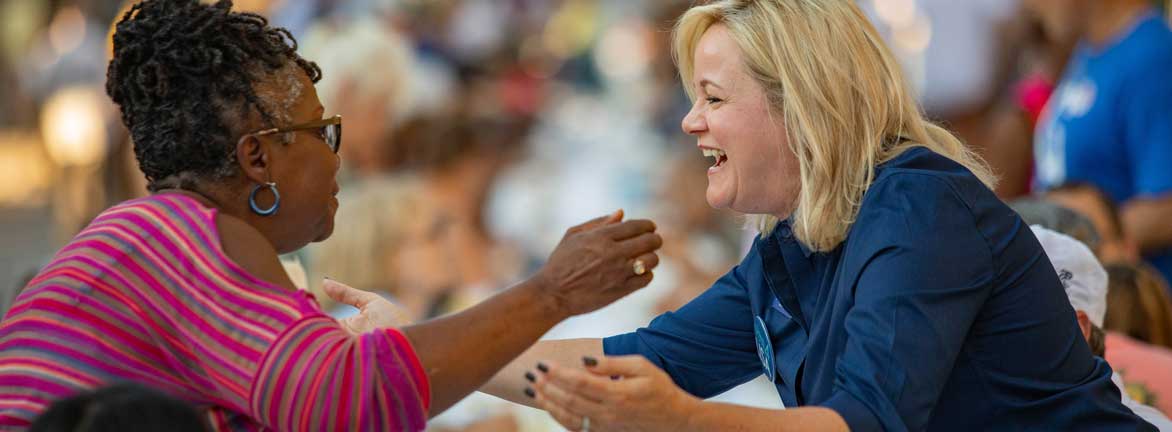
Objective
Enhance citizens’ access to city government operations and public meetings.
- Implement digital town hall at City Commission meetings by 2021.
Initiatives
- Enhance online transparency portal for registered lobbyists, city vendors, and the City’s budget.
- Regularly inform the public of progress toward achieving the targets within the 2024 Strategic Plan.
- Implement data-sharing with local law enforcement partners.
GOAL:
To be a creative and inclusive community with beautiful public spaces that protect and promote resources and
culture.
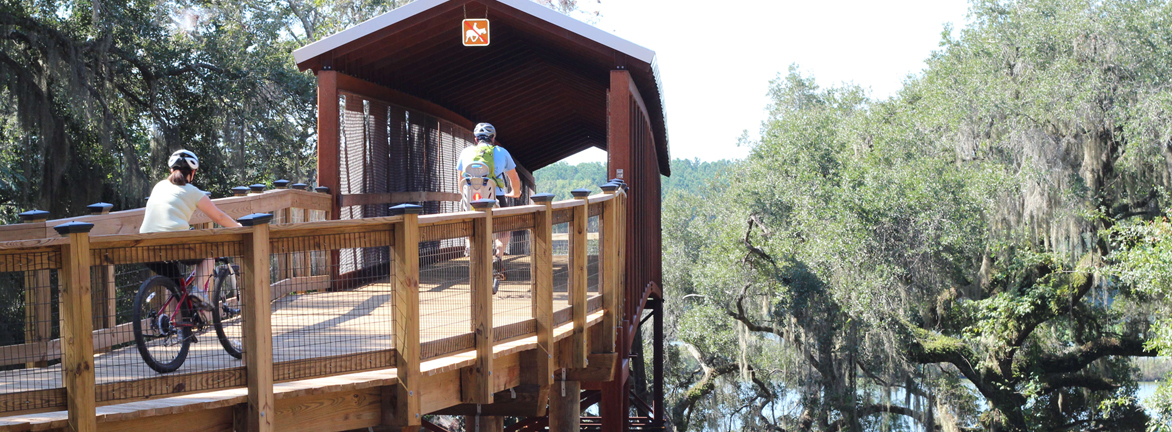
Objective 7A:
Maintain a safe, accessible, well-maintained network of parks, recreational facilities, greenways, and trails.
- Number of parks by 2024. Target: 100 parks
- Percent of residents of living within a 10-minute walk of a park or open space. Target: 100%
- Number of participants in City Parks and Recreation programs. Target: 612,000
- Complete construction of Market District Park by 2024.
- Complete construction of the second Senior Center by 2024.
- Achieve CAPRA accreditation (Commission for Accreditation of Park and Recreation Agencies) from the National Recreation and Parks Association by 2024.
Initiatives
- Continue with the implementation of Greenways Master Plan projects.
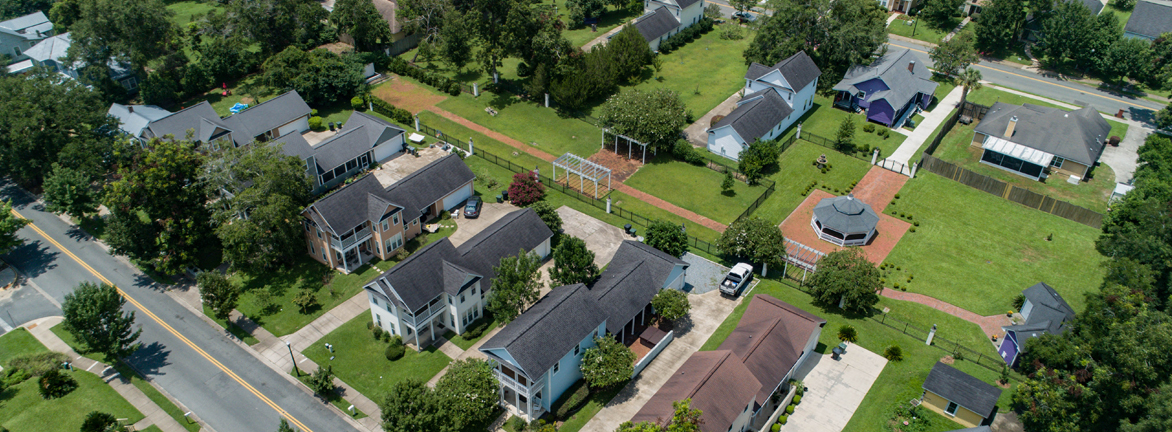
Objective 7B:
Enhance livability and preserve the unique characteristics of neighborhoods.
- Number of neighborhoods with an established liaison. Target: 225 neighborhoods
- Number of sidewalk projects completed annually. Target: 10
- Rate of voluntary compliance by property owners for code violations. Target: 90%
- Percent of urban forest tree canopy coverage. Target: 55%
- Achieve 30 consecutive years of “Tree City USA” status.
Initiatives
- Facilitate neighborhood entry signage and placemaking.

Objective 7C:
Keep residents and visitors informed about events and attractions in Tallahassee.
- Establish a Historic District / Museum Walk by 2024.
Initiatives
- Increase attendance at City-organized and City-sponsored festivals and cultural events year over year.
- Increase diversity and variety of City-sponsored events.
- Provide multiple platforms to inform citizens of local culture and City events.
1.3 Budget Overview
Return to Top
The COVID-19 outbreak has affected the lives of everyone in the community, nation, and globe. People the world over wonder if the pandemic has changed the way that we will work, live, and play. For some, it may have completely altered how we interact with cities.
At the very least, the response to the crisis led to a rattled economy with aftershocks that the City will feel in the new fiscal year. While partially recovered, unemployment is higher than the year before and many small businesses supported by our citizens have closed their doors for good.
The City of Tallahassee is fortunate to have diverse revenue streams and considerable size to absorb and mitigate the effects. Student populations are expected to be down 20% which will affect utility revenues, and State of Florida revenue sharing will decline. Despite these challenges, the City is committed to providing the same level of services for all activities in fiscal year 2021.
As an employer, the organization had provided raises to its employees consistently over the years. With the expected declines in proceeds, foregoing employee raises was necessary to provide a balanced budget. It was, however, able to retain all employees without position cuts. The City Commission, acknowledging the tireless work provided by staff through the pandemic, maintained a position of finding some way to compensate employees despite a year without raises.
Many staff refrained from using personal leave, both due to safety concerns and for lack of available options, causing high vacation hour balances for employees. In response to its desire to compensate employees, the City made available a one-time leave buy back for up to 80 hours of accrued leave. This has the dual benefit of supporting employees and decreasing leave liabilities.
Through intense negotiations, City leadership signed new agreements with its health insurance providers and lowered the employees’ paid share for coverage. On average, employees will now contribute 25% of their coverage cost with a goal of 20% on the horizon. Higher healthcare costs have created some recruitment issues as other local employers provide very generous benefits packages. This shift will help to address this long-term recruitment issue.
|
Health Options - Retain 2020 health plan provision for 2021 and adjust the Employee/City share to an average of 25/75 from 30/70. Single rate complies with ACA Affordability.
|
| Premium FY21 |
Monthly Premium |
Average 25/75 |
| Employee |
City |
Total |
EE% |
City% |
| Employee Only |
104.16 |
629.50 |
733.66 |
14% |
86% |
| Employee +1 |
366.90 |
1,115.62 |
1,482.52 |
25% |
75% |
| Family |
725.90 |
1,290.66 |
2,016.56 |
36% |
64% |
Finally, over 500 City staff earning less than $20 per hour received a $1,000 bonus at the start of the fiscal year. This helps those that are more likely to have trouble making ends meet in a year when across the board raises are not possible.
The road to a balanced budget does not always happen with ritualized resources. The federal CARES Act, passed in fiscal year 2020, supports lost revenues in the new year. With the Great Recession still in its rearview mirror, the federal government had learned many lessons. Legislatures understood that when local governments are forced to cut jobs, not only are critical services lost to communities but the economic recovery becomes more difficult.
CARES Act grant awards were given to StarMetro, the City’s bussing service, the Airport, and Housing and Community Resilience. Coronavirus Relief Fund (CRF) dollars, while not given directly to the City, were provided to Leon County which will allocate some of those resources to its only municipality.
In the face of an economic recession, the City maintains its commitment to offer the same level of services as the year before. This is possible in part due to a sacrifice made by employees as well as the federal government’s response with grant funding.

A pandemic was not the only event to sweep the nation in 2020 but also a movement for increased law enforcement accountability, especially when officers use force. A theme of increasing community engagement emerged during the development of the fiscal year 2021 budget. After meeting with peaceful demonstrators and organizers, the City developed three new means for interacting with the public related to law enforcement.
- A Citizens Police Review Board that inspects completed internal affairs investigations and provides recommendations.
- The Tallahassee Police Department’s Citizens Advisory Council that strengthens the relationship between law enforcement and the community.
- The Youth Citizens’ Advisory Council creates open dialogue about issues impacting Tallahassee’s youth.
Crime is complex. There is much more to criminal activity than “bad people doing bad things”. When faced with a convergence of concentrated poverty, limited economic opportunities, and shortfalls in education, a person may choose crime out of desperation or a lack of hopeful outcomes for themselves or their families. The City of Tallahassee recognizes this and does not rely solely upon policing to fight crime. Sometimes what a community facing crime needs is not to have their hands cuffed but to receive helping hands. In fiscal year 2021, the City will fund several programs to achieve these ends.
Tallahassee Engaged in Meaningful Productivity for Opportunity (TEMPO)
Disconnected youth are teenagers and young adults between the ages of 16 and 24 who are neither working nor in school. Tallahassee’s largest potential gun violence victims and offender pools can be found within this group of Disconnected Youth. This vulnerable group includes high school dropouts, those with prior criminal history, or those aging out of foster care. Without workforce training, vocational skills, diplomas, Disconnected Youth become further disengaged from the productive facets of society and therefore subject to the appeal of criminal activity.
TEMPO, a City of Tallahassee community engagement and public safety youth program, steers Disconnected Youth to more viable alternatives. Program identifies, engages, and reconnects this group to educational and employment opportunities. Through these activities, the program can help to end cycles of poverty, reduce crime by providing economic hope, and reconnecting local youth with the community.
By 2024, TEMPO aims to reduce the percentage of disconnected youth by 30%, impacting the lives of over 2,100 youth. The fiscal year 2021 budgets for an increase in staffing and resources for this effort.
Mental Health Crisis Response Unit (Pilot)
While many first responders are trained in dealing with individuals experiencing a mental health crisis, they are not always best equipped to deal with the myriad of service requests that come through the Consolidated Dispatch Agency (9-1-1 call center). Several cities across the country have begun to redirect calls for nonviolent, crisis situations away from law enforcement to a designated response team of trained mental health and social work professionals.
The fiscal year 2021 budget includes a new crisis intervention response unit consisting of a licensed mental health professional, a TFD Paramedic or EMT, and a CIT trained TPD officer. This team is equipped to provide immediate medical or psychological stabilization, as well as assessment, and referral for additional services beyond the initial incident.
If proven effective, the program could evolve into a 24/7 response unit to include additional human service partners who may provide services during the time of response or provide proactive outreach to vulnerable communities to mitigate crisis situations. In one highly successful model in Eugene, Oregon, the response teams have diverted 18% of overall emergency call volume and saved over $8M in public safety spending annually.
Tallahassee Future Leaders Academy (TFLA)
TFLA is a premier leadership program that provides teens with mentorship and summer employment for well over one hundred participants annually.
The trainings related to job readiness, leadership, careers, customer service, financial literacy, and college campus enrichment open new opportunities that may not otherwise be available. Partnerships with local institutions of higher education enhance youth exposure to college campuses.
Housing Programs
Increases in the rate of home ownership have shown to be linked to declines in both property and violent crimes. While the reason behind this relationship is not completely understood, homeowners likely form deeper connections of social and economic investment with the community. These connections lead to stronger social bonds that spread, affecting many characteristics of the area, but also reducing crime. Homeowners are likely to care more for their properties and their street, as well as lead stable lives and less likely to commit crimes themselves.
The City operates several housing programs with multiple goals in mind, including assisting lower income individuals and families, and reducing the impact of reducing crime.
- Habitat for Humanity Partnership
Habitat for Humanity’s vision is of a world where everyone has a decent place to live. Habitat works toward that vision by building strength, stability, and self-reliance, in partnership with families in need of respectable and affordable housing. Habitat homeowners help build their own homes, alongside volunteers, and they pay an affordable mortgage on their home. The City provides both funding and volunteer hours (more than 1,335 hours to date) to build Habitat houses.
- Emergency Home Repair Program
The Emergency Home Repair Program aims to improve the living conditions of low-income homeowners by removing health and safety hazards and/or architectural barriers from their homes. EHRP is designed to make emergency repairs and accessibility improvements to homes owned and occupied by income-eligible persons.
- Code Enforcement Repair Program
The Code Enforcement Repair Program provides monetary assistance to owner-occupied, income-eligible homeowners who have received notice of exterior code violations, while improving and preserving neighborhoods. To help make needed repairs to bring the home into compliance, $2500/unit is made available as a forgivable loan.
- Storm Damage Mitigation Program
The Storm Damage Mitigation Program provides grant assistance to low-income homeowners to harden their homes against future storms or natural events.
- Owner-Occupied Rehabilitation Program
The rehabilitation and preservation of owner-occupied housing has been identified as a key priority for the City of Tallahassee. Committed to improving the quality of affordable housing, the City allocates a substantial portion of its annual housing budget to the Owner-Occupied Rehabilitation Program (OOR). The goal of OOR is to enhance and strengthen neighborhoods through the rehabilitation of owner-occupied housing.
- Inclusionary Housing
The Tallahassee City Commission passed an ordinance in 2005, requiring new developments in certain areas of the City with 50 housing units or more, to sell 10 percent of their units at an affordable price. The sales price range is established by the ordinance. Developers can pay a fee instead of building the units. The money collected is used to build future affordable housing units. The units are sold to income-eligible homebuyers and are subject to re-sale restrictions.
Neighborhood First
Neighborhood safety is about more than just the absence of crime. It is about the opportunity for residents to build relationships with each other and enjoy vibrant public spaces, accessible social supports, infrastructure that supports resiliency in times of stress, and a shared trust between government and its constituents to allow for partnership at all levels. The City of Tallahassee works with neighborhoods to build partnerships that proactively address crime prevention, disaster response, and safe community spaces.
Neighborhood First is a multistep planning process that assists neighborhoods who are participating in the Neighborhood Public Safety Initiative (NPSI). Neighborhoods develop an action plan to address community priorities. NPSI addresses public safety by focusing on crime prevention and education, community beautification, community empowerment, and volunteerism.
Sustainability, Community Preparedness, and Resilience
Both single catastrophic events and long-term sustained pressures, such as concentrated poverty, can cause a community to experience increases in criminal activity. For the City of Tallahassee, resilience is about strengthening the reliability of infrastructure, protecting a robust natural environment and local economy, building up our adaptive capacity, and empowering self-sufficiency across the community. The Resilience Office partners across city government and stakeholders to build our community’s capacity to thrive in the face external threats or internal weaknesses. The Office develops a cohesive long-range strategy and oversees the integration of effective initiatives throughout city plans, programs, and policies.
Community Human Service Partnership (CHSP)
CHSP helps prevent criminal activity through a multitude of approaches, from helping those with addictions which can result in seeking illegal sources of income, to serving as catalysts for economic or educational opportunities to ascend out of poverty.
This is an innovative collaboration between Leon County and the City of Tallahassee. It was established to most effectively distribute community funds for human services. Historically, cities are less often involved in providing human service funding to nonprofits, as states and the federal government offer these organizations grants and contracts. By providing funding, this program can multiply the resources available to the community. While the City cannot fund all the activities for these nonprofits, agencies use local financing to bring additional state and federal dollars for the benefit of the community.
The funded organizations all have different approaches that can ‘holistically’ impact crime, whether through affecting youth far before legal transgressions occur, or assisting those with mental-health issues.
StarMetro – Public Transportation
The City administers a comprehensive bus transportation system with over 15 routes, including night and weekend service. Each fare is provided at a reduced price to passengers below the actual cost of the ride itself, while some residents ride for free.
This public transportation allows for lower-income workers access to more workable hours and employment than would otherwise be available for those without personal vehicles or to augment their own transportation such as a bike or scooter. Without this mobility, some would be without work and more likely to engage in criminal activity. It also allows for riders to save money otherwise spent on personal transportation to save money for education or starting a business so they may increase their income in the future, or to accrue enough for a down-payment on a home.
While the bus system is supported by some fares and grants, the City transfers over $6 million per year to allow for reduced and free fares for many citizens who need it most. With Leon County Schools allowing for additional options for students to attend schools outside of their zones, StarMetro allows for K-12 students to ride for free. This opens educational opportunities and options unavailable to many citizens before because students must find their own transportation to attend schools outside of their zone.
Parks & Recreation (P&R) – Youth Activities
P&R operates several Community Centers that engage with the general public and juveniles at-risk for criminal behavior;
The Palmer Monroe Teen Center is especially designed to involve youth. The Center creates a positive environment for local teens to reduce conflict throughout the community. The Center focuses on attractive programming, adult mentoring, educational assistance, restorative justice collaboration, and the use of cutting-edge initiatives developed to engage teens through skills-based training, fun and safe entertainment outlets, and community service involvement.
Citywide
In their totality, these programs account for $47.5 million of the budget, and deploy 361.5 FTEs, which is higher than that used for law enforcement. Every year, the City exhibits its versatility in a comprehensive approach in the ways it seeks to solve complex, multi-layer social issues. Further, these solutions are measured and re-visited each year through the budget process to ensure effective outcomes in this community service/public safety investment.
Beyond these programs, City employees make a difference in this community with their own dollars and time. Before the pandemic thwarted many philanthropic efforts, employees participated in a variety of efforts in the previous two years:
- United Way contributions of $101,249
- Relay for Life fund raising of $17,847, more than $95,000 over the last six years, with 400 volunteer hours
- 5,714 pounds of non-perishable food donated for America’s Second Harvest of the Big Bend. Combined with cash donations from StarMetro’s partners, this provided more than 4,762 meals for residents in need
- Over 240 pints of blood donated by City Employees from City Hall, the Gemini Building, and the Water department in a single year
- More than $125,000 donated to community organizations via payroll deduction, with over $434,000 during the past four years
In short, the City of Tallahassee will continue to innovate, approaching age-old issues and novel crises with both classic and cutting-edge solutions. The City can support its current efforts while exploring state-of-the-art programs, because we strive, every day, to be the national leader public service.
READ THE BUDDGET-IN-BRIEF
1.4 Millage Rate
Return to Top
The millage rate is the amount per $1,000 used to calculate ad valorem taxes (property taxes). The rate is multiplied by the total taxable value to determine the property taxes due.
The millage for FY21 for the City of Tallahassee remained at 4.1000 Mills. Compared to similar cities such as Fort Lauderdale, Gainesville, Lakeland and West Palm Beach, Tallahassee has the lowest millage rate.

1.5 Municipal Cost Comparison
Return to Top
When measuring costs to citizens, the City compares itself to a group of eleven cities that share similar demographics, services provided, and square miles served. The Municipal Cost Comparison below contrasts what citizens, both residential and commercial, pay for municipal services.
City utilities undergo regular fee studies to ensure that costs for services are recovered and paid for by those that benefit. The municipal cost comparison, however, demonstrates the competitiveness of rates compared to peer cities across the state. The City ranks as one of the most affordable to citizens year after year.
1.6 Population & Other Community Statistics
Return to Top
Tallahassee experiences consistent population growth. The City plans for a continued increase of its services. When making infrastructure decisions, the organization considers not just today’s demands but also tomorrow’s needs.
To view other statistics and trends that formulate the budget and plans for the City, please click here to read the Supplemental Demographic and Economic Information section.
2.1 Organizational Chart
Return to Top
Download the Organizational Chart
Hover over the City Leader to read a brief summary about them or their department. Click to go to their department budget page or other City website.
2.2 Fund Descriptions & Structures
Return to Top
A fund is an accounting entity that documents activities. Fund accounting prioritizes accountability over profitability. Separate funds ensure revenues are appropriately related to expenditures.
Government funds support core city services where those paying indirectly benefit from the services. Enterprise funds are self-supported by user fees and charges. These operate similar to private businesses.
Below are summaries of important appropriated funds.
This fund supports many of the core city services including police, parks and recreation, road maintenance, housing initiatives, economic development, land use, environmental regulation, and animal services. The general government also provides an operating subsidy to Star Metro, the city's transit system.
Fund Type
Government
Surplus
Any remaining balance is first used to fund the Deficiencies Reserve until the target level is achieved. After fully funding the deficiencies fund, any remaining balance may be used to support the subsequent year’s operating budget, up to a maximum of 5% of general government operating expenditures, and to buy down debt-financed capital improvement projects.
General Fund Transfer
$5 million in new funding is budgeted to support projects in FY21.
Operating Reserve
$1.8 million is budgeted for Contingency in FY21.
Other
Deficiencies Reserve: Up to 5% of year-end surpluses will be allocated to support subsequent year’s operating deficit.
Fleet Reserve:The FY21 contribution is $1.6 million
RR&I: Undesignated balance set at a maximum of 3% of general government capital projects.
Established in 1902, the Tallahassee Fire Department (TFD) is a municipal fire department that provides fire suppression and emergency medical services in the City and the unincorporated areas of Leon County, Florida. The department is charged with the responsibility of protecting lives, property and the environment from hazardous conditions that threaten our community. This mission is accomplished through the provision of prevention and protective services specific to the incident need.
Fund Type
Enterprise
Surplus
Retained for fire operating and capital costs.
General Fund Transfer
No transfer.
Operating Reserve
No reserve.
Other
Not applicable.
The City of Tallahassee's Natural Gas Utility has provided clean, safe, economical and reliable natural gas to residents and businesses in a growing service area for over 60 years. The utility safely provides natural gas energy through hundreds of miles of underground gas mains, which serve over 30,000 customers in the Leon, Gadsden, and Wakulla areas. The highly trained staff works to ensure the integrity and dependability of the distribution system, and to assist customers with energy conservation and cost savings through natural gas use.
Fund Type
Enterprise
Surplus
Designated to fully fund the operating reserve and thereafter to fund gas system capital projects
General Fund Transfer
The transfer is based on CPI. The transfer for FY21 is $3.0 million.
Operating Reserve
Funded at 25% of the previous year’s General Fund transfer. Used to meet General Fund transfer, if required.
Other
RR&I:
Transfer budgeted at a level equivalent to depreciation expense as provided in the applicable rate study.
Fund Type
Proprietary
Surplus
Except for the In-formation Systems Services Fund, revenues for all funds are balanced against actual expenditures, resulting in zero surpluses.
General Fund Transfer
Not applicable. Excess balances from budgeted revenues are transferred to the original funding source at year-end.
Operating Reserve
No Reserve.
Other
Funding needed for large capital outlays in the Information Systems Services Fund may be accumulated over a period of time in its RR&I fund.
The Electric Utility serves over 120,000 customers in a 221-square mile service territory. It is the fourth largest municipal electric utility in Florida, and the 26th largest of over 2,000 municipal systems in the United States. The utility is comprised of six major divisions: Finance and Administration, Power Delivery, Energy Supply, System Operations, System Compliance, and System Integrated Planning. The Electric Utility develops 10-year sales forecast annually to use in the annual budget process.
Fund Type
Enterprise
Surplus
Operating fund balance after General Fund transfer minus bond reserves used to fully fund the operating reserve, with the balance designated for electric system capital projects.
General Fund Transfer
The transfer is based on CPI. The transfer for FY21 is $31.5 million.
Operating Reserve
The operating reserve is comprised of four subcomponents, with the primary purpose aimed at providing working capital. The working capital component is targeted with having a balance of 60 to 90 days of operating expenses. The other three components are fuel risk management, emergency reserve and rate stabilization.
Other
RR&I: Transfer budgeted at a level equivalent to depreciation expense as provided in the Comprehensive Annual Financial Report (CAFR).
The City of Tallahassee's Water Utility is responsible for ensuring the safe and uninterrupted delivery of the highest quality drinking water to its customers.
Fund Type
Enterprise
Surplus
Designated to fully fund the operating reserve and thereafter to fund water system capital projects.
General Fund Transfer
The transfer is based on CPI. The transfer for FY21 is $3.6 million.
Operating Reserve
Funded at 25% of the previous year’s General Fund transfer. Used to meet General Fund transfer, if required.
Other
RR&I:
Transfer budgeted at a level equivalent to depreciation expense as provided in the Comprehensive Annual Financial Report (CAFR).
The City Commission adopted an ordinance on September 10, 1986 establishing the Cemetery Perpetual Care Trust Fund (PCTF) for the maintenance and operation of the City cemeteries. Proceeds from this trust are transferred annually to support operations within the Cemetery Division. The City of Tallahassee owns and maintains five cemeteries totaling 133 acres. The City also provides maintenance services for the historic Plantation Cemetery.
Fund Type
Trust
Surplus
Retained for cemetery operating and capital costs.
General Fund Transfer
No transfer.
Operating Reserve
No reserve.
Other
Not applicable.
The City of Tallahassee's Sewer Utility is responsible for collecting, treating and disposing of wastewater, along with treating commercially pumped sewage. Wastewater is treated in the City’s Advanced Wastewater Treatment plant to a standard that more than exceeds regulatory requirements, as part of the City’s commitment to protecting the environment.
Fund Type
Enterprise
Surplus
Designated to fully fund the operating reserve and thereafter to fund sewer system capital projects.
General Fund Transfer
The transfer is based on CPI. The transfer for FY21 is $5.0 million.
Operating Reserve
Funded at 25% of the prior year’s General Fund. Used to meet General Fund transfer, if required.
Other
RR&I:
Transfer budgeted at a level equivalent to depreciation expense as provided in the Comprehensive Annual Financial Report (CAFR).
The Stormwater Fund manages and develops infrastructure for drainage, flood prevention and retention of storm water run-off to prevent pollutants from entering the aquifer. This includes capital project over-sight, maintenance of drainage infrastructure such as retention ponds and drainage outfalls, monitoring of lakes and ground water and raising pub-lic awareness of the environmental impacts of pollution, such as the Think About Personal Pollution (TAPP) program.
Fund Type
Enterprise
Surplus
Retained for stormwater system capital projects.
General Fund Transfer
The transfer to the General Fund represents administrative cost sharing only.
Operating Reserve
No Reserve.
Other
RR&I:
Maximum of 5% of capital projects funding sources, with a minimum level of 3%.
The Aviation Fund supports operations at the Tallahassee International Airport (TLH) by the Aviation Department and the Police Airport Unit. The Fund also makes contributions to the Fire Fund for the Tallahassee Fire Department’s operations at the airport.
Fund Type
Enterprise
Surplus
Retained within fund and allocated according to airline use agreement.
General Fund Transfer
No transfer to General Fund. Full recovery of cost.
Operating Reserve
Minimum of 1/12th of operating and maintenance budget for Airport designated for unanticipated non-recurring expenditures.
Other
RR&I:
Not applicable.
As part of the Community Beautification and Waste Management Department, the Solid Waste Fund provides for removal and disposal of garbage, bulky items and yard waste, as well as recycling and recycling services for residential and commercial customers within the city limits
Fund Type
Enterprise
Surplus
Retained for rate stabilization reserve.
General Fund Transfer
The transfer is based on CPI. The transfer for FY21 is $1.9 million.
Operating Reserve
No Reserve.
Other
RR&I:
Not applicable.
View full schedule of major and nonmajor funds.
View matrix of the relationship between departments and funds.
2.3 Basis of Budgeting
Return to Top
Budgets for general operation funds (General, StarMetro and Golf Course Funds) are prepared on a modified accrual basis. The obligations for these funds (i.e., outstanding purchase orders) are considered expenditures, but revenues are recognized only when they are measurable and available. At the end of the fiscal year, open encumbrances are reported as reservations of fund balance. The operating budget does not include expenses for depreciation.
The budgets for the City’s utilities (Electric and Underground) and other enterprise funds (Aviation, Building Inspection, Solid Waste, Fire, and Cemeteries) are budgeted on a full accrual basis. Expenditures are recognized when a commitment is made (e.g., through a purchase order). Revenues are also recognized when they are obligated to the city, such as when utilities distribute bills.
The basis of budgeting is the same as the basis of accounting used in audited financial statements. Budget and accounting procedures are subject to modifications to comply with generally accepted accounting principles (GAAP) as well as the standards of the Governmental Accounting Standards Board (GASB).
2.4 Financial Policies and Guidelines
Return to Top
There are several statutory requirements, internal policies, and other provisions that direct the development of the budget and its implementation throughout the year.
Florida Statutes, Chapter 166 – This statute authorizes municipalities to levy taxes, issue licenses, and set user fees to raise money necessary to conduct municipal government activities. This chapter also requires that local governments adopt a balanced budget. The tentative balanced budget must be posted on the municipality’s official website at least 2 days before the budget hearing, held pursuant to s. 200.065 or other law, to consider such budget. The final adopted balanced budget must be posted on the municipality’s official website within 30 days after adoption.
Florida Statutes, Chapter 200 – This statute establishes procedures for adoption of local government annual budgets and limits ad valorem taxes to 10 mills. This statute also requires that local governments appropriate a balanced budget in which anticipated revenues and expenses are equal. Failure to comply with the provisions of the statute could result in loss of state revenue sharing and/or ad valorem taxes.
Ad Valorem Taxes – The Property Appraiser provides an annual estimate of taxable property values for the preceding year. Based upon adopted millage rates, municipalities are required to budget 95% of the gross taxable value for operating purposes. The city typically budgets 97%. In FY 2004, the city’s millage rate increased from 3.2 mills to 3.7 mills. This was the first millage rate increase since FY 1991. As a result of property tax reform legislation enacted by the Florida Legislature, the millage rate in the FY 2008 approved budget was reduced to 3.1686 mills. Due to the passage of Amendment 1 on January 29, 2008, the city’s millage rate for FY 2009 was 3.2115 mills. In FY 2010, the City Commission voted to increase the millage rate to 3.7 mills. The FY 2016 approved budget included a millage increase from 3.7 mills to 4.2 mills and in FY 2017 the millage was reduced to 4.1 mills. For FY 2020, the millage remains at 4.1 mills.
Florida Statutes, Chapter 202 – The Communication Services Tax consolidates a variety of taxes formerly imposed on telecommunication, cable, home satellite and related services. Opting for the highest rate allowable by law, 6.1%, the City of Tallahassee is required to forego permit fee charges for use of city right-of-way.
Community Redevelopment Agency, Florida Statutes Chapter 163, City of Tallahassee Ordinance 00-O-51 and 04-O-60 To encourage economic development, the City Commission established a Community Redevelopment Agency (CRA) and designated an initial district (Frenchtown) of approximately 1,400 acres for redevelopment. A second district (Downtown) was approved in June 2004. Each CRA district is entitled to 95% of the ad valorem tax increment generated within the district and the proceeds may be used only for improvements in the district.
Downtown Improvement Authority, Florida Statutes Chapter 71-935 – Established by a special act in 1971, the Downtown Improvement Authority may levy an additional ad valorem tax, not to exceed one mill, on properties within the district. Proceeds are used for improvements in the district and are administered by a separate Board of Directors.
Comprehensive Plan – The Tallahassee-Leon County 2010 Comprehensive Plan was originally adopted by ordinance in FY 1990 and is updated with biannual amendment cycles. The Plan includes capital improvements, transportation, historic preservation, utilities, recreation, and other elements which provide a framework for allocating budget resources. The Capital Projects Summary includes a listing of capital projects that address Comprehensive Plan initiatives by eliminating deficit levels of services or by maintaining existing levels of service.
Financing Policy, No. 224 Commission Policies – The financing policy establishes guidelines for distribution of year-end surpluses, transfers from the utilities to the General Fund, types and amounts of operating reserves, and funding for capital projects from undesignated fund balance year-end revenues. The policy also provides for full recovery of cost for enterprise funds, limits non-utility fee increases to a maximum of 20% per year unless otherwise approved by the City Commission; and allows discount fees for recreational programs for youth, seniors, and disabled citizens. The “Finance Policy Summary” chart shows the requirements of the policy as applied to each fund.
Risk Management Policy/Self-Insurance, No. 214 Commission Policies – This policy creates an internal service fund for payment of anticipated claims and judgments for coverage areas defined in the policy. In addition, a special Insurance Reserve Fund is established and funded to meet unanticipated losses from catastrophic events or claims in excess of the Risk Management Fund. This reserve is set at 150% of the average claims for the past five years or $3,000,000, whichever is greater.
Capital Project Management, No. 218 Commission Policies – This policy provides for preparation of an annual capital budget and for a five-year capital improvement plan. The policy also defines roles and responsibilities of city departments and management regarding contracts, supplemental appropriations, over expenditures, and project administration. The use of capital project overhead charges as an operating budget funding source also is established by this policy.
Local Option Sales Tax Management, No. 232 Commission Policies – This policy establishes the authority to provide advance funding for local Florida Department of Transportation (FDOT) projects for any project or phase of project included in the FDOT five-year work plan. It allows for advance funding without an agreement for repayment after conducting a public hearing. The policy also authorizes the use of short-term debt to cover cash flow shortages that may result from this practice.
Debt Management Policy, No. 238 Commission Policies – The debt management policy, along with an analysis of the city’s compliance with the policy, is included in the capital budget summary and in the capital improvement plan. Section 104 of the City Charter also specifies that general obligation debt will not exceed 20% of the assessed taxable valuation. Florida Statutes require that general obligation bonds be approved by referendum. The city currently does not have any general obligation bonds.
Vehicle Replacement Reserves – Funding for replacement of vehicles is included on an annual basis in the capital budget. To fund the reserves, each department is charged in the operating budget for a proportionate share of these costs based on equipment usage.
Bond Covenants – Prior to 1998, provisions of Bond Resolutions required that a minimum of 5% of prior year gross revenues be budgeted annually for Renewals, Replacements, and Improvements (RR&I) for system improvements in the utility enterprises. Covenants for the Energy System (electric and gas) bonds that were issued after 1998 do not specify an explicit amount or methodology but require a transfer to an RR&I fund.
Union Agreements – Currently, unions represent 677 FTEs (authorized positions). A total of 401 positions are subject to terms and conditions of the collective bargaining agreement with the Big Bend Chapter of the Florida Police Benevolent Association, Inc. (PBA) and 276 positions are subject to terms and conditions of the collective bargaining agreement with the International Association of Firefighters (IAFF). The City Commission and the PBA established a new three-year agreement, which was retroactively commenced on October 1, 2017 and extended through September 30, 2020. The IAFF ratified a new agreement on collective bargaining contracts for the existing firefighter unit (firefighters, fire engineers, and fire lieutenants) and the supervisory unit (battalion chiefs and captains), which was retroactively commenced on October 1, 2017 and extended through September 30, 2020.
Utility Rate Studies – Rate studies are prepared for each of the utility enterprise operations (electric and underground utilities). Revenue projections are prepared using historical weather patterns as well as other growth factors. These studies comprise the basis for the annual budgets for each of the utilities. Starting in October 2012, Water, and Sewer Utility rates increase annually by the CPI. This CPI increase methodology is the same for Electric, Natural Gas and Solid Waste rates. As of October 1, 2018, electric and natural gas rates remain below the state average.
Assessment and Fee Reviews – Fees and assessments are periodically reviewed to ensure recovery of costs to provide certain services. A cost of services study for the animal shelter was conducted in 2006, which recommended a plan to recover at least 50% of the operating costs through animal licensing fees, but this has not been implemented. The City Commission also increased building inspection fees in August 2009 to fully recover all eligible building inspection costs. Rates for electric, underground utilities and solid waste are set by ordinances which provide for annual increase based on the CPI. Updated Fire services fee were implemented on October 1, 2015.
2.5 Budget Calendar
2.6 Budget Process
Return to Top
The budget process involves collaboration and coordination among city departments, Resource Management, executive leadership, the City Commission, and the citizens of Tallahassee. It results in annual operating budgets, capital budgets, and a five-year financial and capital improvement plan for the General Fund and enterprise funds. While the fiscal year begins on October 1st, the budget is a continuous cycle.
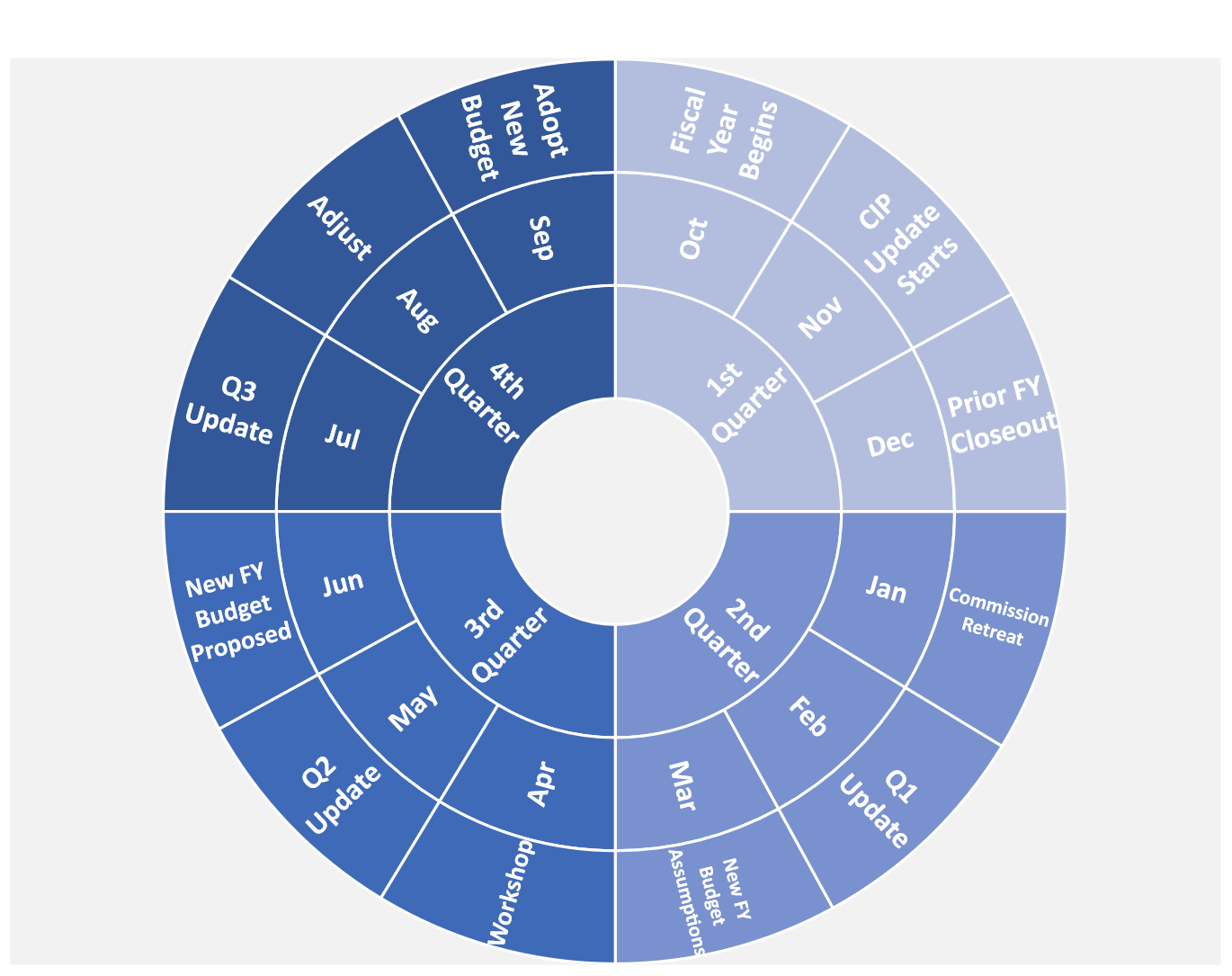
The City holds several budget workshops throughout the year. These serve the dual purpose of updating for the current fiscal year and the next budget cycle. Workshops are less formal city commission meetings that do not include a litany of items for the commissioners to address. Instead, the workshop allows for a focused discussion on the topic.
At the first quarter workshop Resource Management reports on the early status of its funds to the Commission for the current budget cycle. It also presents some initial assumptions to work toward for the next one. This includes proposing an initial millage rate, employee raises, benefits, and other items.
At the second quarter workshop, assumptions are reaffirmed and priorities are addressed. Issues with the current year’s funding can be addressed while taking a stronger look at the upcoming year.
At the third quarter workshop, Resource Management presents a proposed budget for the following fiscal year. These include most of the capital projects, priorities, and changes. Any major issues for the current budget year are also addressed at this workshop.
The City maintains a “hold the line” philosophy when budgeting for departments’ operating costs. Budgets for things such as office supplies or contracts are not increased every year. Without automatic increases in budgets, staff innovate for cost savings annually. Departments evaluate procedures to be more efficient. Maintaining cost levels helps the City to keep its millage rate the same.
Hold the Line counters a classic budgeting issue known as “use it or lose it”. In older budgeting techniques, departments are incentivized to completely spend their budget, and then use their resource depletion as a justification to maintain their budget levels. Sometimes the spending would persuade for even higher budgets the next year. With Hold the Line, Resource Management assures departments that their budget levels are safe. This leads to less spending overall as departments do not spend money merely to defend their allocations.
At the 1st quarter budget workshop, staff present initial assumptions to the City Commission for the next budget year. These include two major items: millage rate and staff pay raises.
For the City to be a leader in public service, it must recruit, train, and retain the best people. The City has a history of regular increases for staff ranging from two to three percent. This accommodates for increases to the cost of living, but the commitment can attract the best employees to the organization. While the recession made an across the board increase for FY21 untenable, other staff bonuses were implemented as discussed earlier.
A diversity of revenue sources blesses the City both through a purposeful strategy and as a matter of history. This allows for the City to keep its millage rate very low compared to other governments, and it has avoided increasing millage for many years.
The public is encouraged to provide input anytime. City Commission meetings, City Commission budget workshops, and commissioner or leadership meetings are all available to citizens. Two statutorily required public hearings on the budget are also held in September each year to solicit public input. Building upon the goal of increased transparency, the City’s OpenGov platform allows citizen review of not only budget information down to the account level, but also actual expenditures and transactions throughout the year.
Departments are responsible for developing their respective budget requests with support from Resource Management. Throughout the year, City Commission budget workshops are held to discuss policy issues and long-term ramifications of budgetary decisions. The City Commission adopts a tentative millage rate for the assessment of ad valorem taxes in early July as required by state statutes. The final budget and the millage rate are adopted by resolution during the month of September, following two statutorily required public hearings.
The City’s budget is appropriated at the fund level. Revenues are budgeted at the fund level only, while Department expense budgets are contained within one or more cost centers. There are currently nearly two hundred cost centers across all department.
Budgetary control is maintained at the department level with Resource Management providing support. In accordance with the city’s budget transfer policy, departments can amend budgets in various ways depending on the type of transfer being considered.
Any budgetary amendment that is within the department’s appropriated budget and within the same fund can be authorized by the City Manager. Transfers between departments that cross funds or increase appropriations are made at the request of the City Manager and must be approved by the City Commission.
Budgetary amendments between divisions and within the same fund may be initiated at the discretion of the department head except for transfers affecting certain categories such as personnel. Requests for amendments to the line item exceptions are reviewed by Financial Management and approved by the City Manager or respective appointed official for transfers affecting the offices of the City Attorney, City Auditor, or City Treasurer-Clerk.
Since the implementation of the PeopleSoft financial system, budgetary control has moved from the line-item level to major budget category. In classic line-item budgeting, departments cannot spend more than a certain amount on very specific categories. This tended to limit flexibility, and governments could not adapt to problems that arose throughout the year. Now, departments may over-expend line items provided there are available balances in the respective major budget category. This allows for greater managerial flexibility. Department heads can respond to citizens’ needs without dense bureaucratic processes.
3.1 Financial Schedules
This section contains links to the OpenGov transparency portal that the City of Tallahassee uses to share financial and budgetary information. The strength of the platform lies in the power of the viewer to see the budget from any angle. Select the links below as starting points.
3.2 Fund and Reserve Balances
Click here for the Capital Fund Balance Report
Click here for the Schedule of Reserves
| Fund Name |
FY20 Actual Revenue |
FY20 Actual Expense |
FY20 Actual Variance |
Year-End Closing Action |
| General |
$152,682,721 |
$161,680,136 |
$(2,997,415) |
Use of Deficiencies Fund |
| Building Inspections |
3,781,433 |
4,297,341 |
(515,908) |
Use of Building Code Reserve Fund 121, per State Law |
| Fire |
46,030,172 |
48,309,327 |
(2,279,155) |
Use of 100% of the Fire Fund operating Reserve as anticipated in rate study, leaving $0 reserve for FY21 until FY22 implementation of Rate Resolution. |
| Electric |
278,383,645 |
272,671,787 |
5,711,858 |
Transfer to operating reserve for fuel risk management |
| Gas |
27,289,976 |
22,712,231 |
4,577,745 |
Transfer to RR&I to fund future investment in infrastructure. |
| Water |
41,395,676 |
39,714,875 |
1,680,801 |
Transfer to RR&I to fund future investment in infrastructure. |
| Sewer |
73,789,378 |
71,554,869 |
2,234,509 |
Transfer to RR&I to fund future investment in infrastructure. |
| Aviation |
12,361,381 |
10,394,288 |
1,967,093 |
Transfer to RR&I and airline revenue sharing. |
| StarMetro |
12,936,838 |
13,340,797 |
(402,959) |
Transfer from General Fund. |
| Solid Waste |
29,641,367 |
27,857,192 |
1,784,175 |
Transfer to operating reserve to offset use in FY19. |
| Stormwater |
19,775,367 |
17,493,220 |
2,282,250 |
Transfer to RR&I to fund future investment in infrastructure. |
| Golf |
761,971 |
828,904 |
(66,933) |
Transfer from operating reserve. |
| Cemetery |
207,152 |
765,631 |
(558,479) |
Transfer from Perpetual Care Trust Fund as anticipated in the budget. |
General Fund Reserves
The General Fund provides a variety of governmental services. The two largest cost centers for the General Fund include Tallahassee Police Department and Parks, Recreation, and Neighborhood Affairs. These two departments comprise 38% and 14% of the General Fund, respectively, including funding for all of their facilities.
Other services located in the General Fund include public infrastructure planning and engineering; community beautification and right-of-way maintenance; growth management; planning; the offices of the appointed City Attorney, Inspector General and Treasurer-Clerk; Housing and Human Services; Sustainability and Community Preservation; and other services that support the community and the organization. Capital funding transfers for debt service and transfers to other funds account for 14% of the fund at $22.7 million.
With approval of the closeout agenda, $2,997,415 will be appropriated from the Deficiencies Fund to the General fund to cover the difference. The target for the Deficiencies Fund balance is two months of the subsequent year’s General Fund expenditure budget (City Commission Policy 224 on Financing the Government, Section IV(C)), which is $26,965,720. With the use of $3 million in FY20, the Deficiencies Fund balance is $16,416,063, or 61% of the policy target.
Over the next year, increases to the Deficiencies Fund will come from future land sales, pending obligation of reimbursements from FEMA for storm events of approximately $5.7 million, as well as funding from past and potential future COVID-19 relief packages from Congress. Budget strategies to increase the Deficiencies Fund would be employed over time as well.
Building Inspection Fund Reserve
The Building Inspection Fund for FY20 is balanced at $4.3 million with the use of $515,909 in operating reserves as amended with approval of this agenda item. Building Inspection operating reserves are available for operating purposes because the fund is self-sustaining, services are provided over time after collection of permit fees, and service demand is variable.
In FY20, social distancing requirements due to COVID-19 challenged the continued issuance of building permits, and Growth Management developed new virtual permitting processes to overcome these obstacles. These innovations curbed the potential revenue shortfalls that could have impacted the fund’s reserves an even greater extent. Some of these changes will be incorporated into post-COVD-19 operations for more efficient delivery of services. The fund’s operating reserve was $2.2 million before a $515,909 transfer balanced the fund, leaving $1.6 million in reserves for FY21.
Looking ahead to FY21, commercial permitting has resumed at a high level, and revenues are expected to partially recover. An operating reserve transfer is budgeted for $339,815, which would leave $1.3 million in reserves for FY22. Staff continues to monitor revenues, and if a full recovery is not made during FY21, then a recommendation for a fee study may be made in the future.
Fire Fund
The Fire Fund for FY20 is balanced at $48,309,327 with use of $2,279,154 in operating reserves.
The Tallahassee Fire Department (TFD) provides the City of Tallahassee and Leon County with quality fire suppression; specialized hazardous material response; emergency management; facilities security; focused urban search and rescue; dedicated technical rescue; superior vehicle extrication; high-quality emergency medical care; fire safety code compliance review and enforcement; and varied public education services. Beyond Leon County, the department also provides emergency response via mutual aid to communities in the surrounding area.
Within TFD, Emergency Medical Technicians (EMTs) are trained in Basic Life Support (BLS) measures for trauma care, cardiac and stroke care, CPR, advanced first aid, childbirth, and basic medication administration. TFD’s Paramedics are ALS certified and responsible for managing the emergency medical scene according to protocol and directing operations inside of the medical transport unit as it travels to the hospital.
As planned, FY20 was the fifth year of the of Fire Services Assessment Fee adopted in 2015 for FY16 through FY20. The fire assessments did not increase over the five-year period and were designed to generate surplus funds in at least the first two years, which would offset planned fire fee-related deficits in the latter years.
The EMS agreement with Leon County based on a shared funding agreement that utilizes the 0.5 mill EMS MSTU also provides funding for the EMS portion of the Fire Department’s budget. This agreement has also remained unchanged during this five-year period. The fund is closed out and balanced with a transfer from the Fire Services Operating Reserve Fund as planned.
Electric Fund
The Electric Utility serves over 124,000 customers in a 221-square mile service territory. It is the fourth largest municipal electric utility in Florida, and the 27th largest of over 2,000 municipal systems in the United States. The utility is comprised of six major divisions: Financial and Administrative Services, Power Delivery, Energy Supply, System Operations, System Compliance, and System Integrated Planning. The Electric Utility develops 10-year sales forecast annually to use in the annual budget process. This sales forecast is based on a variety of inputs such as heating and cooling degree days, and economic and population growth, weather being the most variable driver. Actual sales, as the year progresses, are used to guide the operational decisions of the utility.
Monitoring the impacts of COVID-19 on Electric Utility operations and sales was a critical factor in FY20. Overall, the impacts to sales were not as severe as expected, with retail electric sales 3.8% below forecast. Furthermore, an increase in wholesale sales resulted in an offset to the retail sales shortfall. With Commission approval, the resulting surplus of $56,814 will be transferred to the Electric Operating Reserves and the Electric Fund will end the year balanced.
Gas Fund
Since 1956, the City of Tallahassee’s Gas Utility has provided clean, safe, economical and reliable natural gas to residents and businesses in our growing service area. Natural gas is provided through 930 miles of underground gas mains, which serve over 33,000 service points in Leon, Gadsden, and Wakulla counties.
Monitoring the impacts of COVID-19 on Gas Utility operations and sales was a critical factor in FY20. Overall, the impacts to sales were moderate, with retail gas sales 9.3% below forecast. The reduced sales were offset in fuel and operational savings. With Commission approval, the expected year-end RR&I transfer of $2.87 million will be reduced to $2.63 million and the surplus of $14,728 will be transferred to the Gas Operating Reserves. With these actions the Gas Fund will end the year balanced.
Water Fund
The City’s water system currently services 86,000 connections with approximately nine billion gallons of water per year. This around-the-clock operation includes 27 water wells and treatment facilities, 8 elevated storage tanks, 6,900 fire hydrants and over 1,200 miles of water distribution piping. A rate study for the Water Fund was completed in 2017, and new rates became effective in February 2018, with additional increases implement in January 2019 and January 2020.
As shown in the table above, the Water Fund for FY20 is balanced at $41,395,676 with the requested actions to transfer $145,099 to replenish the Water Operating Reserve and the remaining surplus of $1.53 million to be transferred to the Water RR&I fund. Any ongoing impacts from COVID-19 with regards to changes in water consumption will continue to be monitored across customers classes to help react to any noticeable shift in consumption behaviors. The department will continue monitor expenses and find efficiencies to stay within the parameters of the rate study.
Sewer Fund
The City’s wastewater operation treats an average of 17.5 million gallons per day, transporting raw sewage from homes and businesses in Tallahassee to the Thomas P. Smith (TPS) Advanced Water Reclamation Facility. This facility provides wastewater treatment that significantly reduces total nitrogen in treated wastewater to well below regulatory standards in order to protect Wakulla Springs. Along with the Water Fund, a rate study for the Sewer Fund was completed in 2017, and new rates became effective in February 2018, with additional increases implemented in January 2019 and January 2020.
As shown in the table above, the Sewer Fund for FY20 is balanced at $73,789,378 with the requested action to transfer the surplus of $2.23 million to the Sewer RR&I fund. Sewer sales are determined by water consumption and will follow similar trends experienced from future COVID-19 impacts. The department will continue to monitor expenses and find efficiencies to stay within the parameters of the rate study.
Stormwater Fund
The Stormwater Utility serves 75,000 residential customers and 6,000 non-residential customers through operational activities and the design and construction of drainage facilities infrastructure. This includes the maintenance of drainage facilities and ponds throughout the City.
The Stormwater Fund for FY20 is balanced at $19,775,470 with the requested action to transfer the surplus of $2.28 million to funding for capital RR&I. Ongoing tracking of customer growth will be the best indicator for revenues impacts experienced from COVID-19 and savings will be found through continued monitoring of expenses and additional efficiencies.
Aviation Fund
The Aviation Department operates Tallahassee International Airport (TLH). In FY20 TLH secured an expansion of direct flight service, as United now offers a flight to Houston. The Airport now hosts four airlines (American Airlines, Delta Air Lines, United Airlines and Silver Airways) that deliver non-stop service to eight destinations, and provides amenities to customers including valet parking, long- and short-term parking, a cell phone parking lot, rental car options, a new public waiting area, business center, dining options, and more. As part of the City’s five-year strategic plan, Tallahassee International Airport will constructing an International Passenger Processing Facility, with a five-year goal of having a $1 billion annual economic impact.
The Aviation Fund supports the Aviation Department’s six divisions and the Airport Police and Airport Operations-Fire divisions. The Airport Fund is a self-supporting activity that requires no support from General Government. The Airport receives revenue from many sources including airline charges, airport parking, rental car concessions, other concessions and rental of leased property, with key drivers being enplanements, deplanements, and aircraft operations. TLH was heavily impacted by the COVID-19 pandemic, which saw a major decrease in passenger traffic starting in March with a 48.1% drop from the prior year’s month and troughing at 95.7% of the prior year’s month in April. Ridership has steadily increased since April.
The Aviation fund is balanced at $12,361,381. The department received $2.8 million in CARES Act funds that were used to offset decreased revenues in FY20 attributed primarily to the decrease in passenger traffic. Surplus revenue funds were transferred to Airport RR&I fund and Airline Revenue Sharing Fund in accordance with the Airline Use and Lease Agreements implemented in FY17.
Solid Waste Fund
The Solid Waste Fund provides garbage, recyclable materials, bulk and yard waste collection for all residential customers citywide, and garbage and recyclable materials collections for commercial customers. Currently, the City serves 47,936 residential, 15,415 commercial, and 1,835 commercial recycling service points. This includes residential bi-weekly curbside collection of bulky items, yard waste, electronics, and white goods, dumpster services for commercial customers collected by front-end loading trucks at night, up to six times per week, commercial container service with roll-off or hook trucks up to six times per week and commercial recycling up to five days per week, as well as other enhanced services. Dead animal removal and street sweeping services are also provided by this fund.
The Solid Waste Fund is balanced at $29,641,367. FY20 resulted in revenues in excess of expenditures of $1.7 million in the Solid Waste Fund.
The additional $1.7 million will be transferred to the operating reserve and will offset future increases in recycling costs. Following extensive analysis, and at the Commission’s direction, staff is negotiating a new agreement with its current provider of recyclables processing services that will result in increased costs.
Golf Fund
Hilaman Golf Course offers a community-wide golf experience through daily rounds, driving range use, charity events, tournaments, and more. In recent years, new turf hitting mats, signs, flags, and tee markers, along with bunker renovations that allow water to drain faster, are upgrades that have improved the golfing experience. Hilaman also has a Pro Shop, restaurant, and outdoor deck area for a well-rounded experience.
Rounds played and membership fees remain the drivers of revenue for the fund. Due to COVID-19, Hilaman was closed for approximately eight weeks between March and May out of concern for public health. Revenue decreased during this time while many course-maintenance operations continued. The course reopened with increased safety measures.
The Golf Fund is balanced at $761,471. Revenues and expenses were both below FY20 budget levels. The fund finished the year with a deficit of $66,933 before year-end adjustment, which was a transfer from RR&I.
Cemetery Fund.
Revenues and expenditures for the Cemetery Fund are balanced at year end, at $765,631. This includes a transfer of Perpetual Care Trust Fund (PCTF) reserves of $558,479, with $400,000 provided as a supplemental appropriation for the expansion of the Southside Cemetery.
3.3 Revenues
The City has hundreds of different sources of revenue, but there are 27 specific types that account for over 80% of the organizations proceeds. The Revenue Analysis describes them, explains how they are budgeted, and reviews the current trends.
Click here to review the Revenue Analysis.
3.4 Long-range Financial Plans
This section directly connects the financial sections of the strategic plan and addresses other financial issues with a long-term outlook.
Click the objectives or initiatives below to monitor these plans progress.
The City of Tallahassee is committed to providing a living wage to its employees. The City Commission approved a minimum living wage of $12 per hour in FY18 for all full-time employees. The City Commission expanded the application in FY19 to include hourly employees that work more than 30 hours a week on average and who are also eligible for health care coverage. This minimum $12 hourly wage does not apply to other part-time workers who work less than 30 hours per week on average. These positions are typically short term in duration for six months or less, however, there is no limitation on how long an employee may remain in a part-time job. These positions include: Animal Care Taker, Cashier-Clerk, Department of Corrections Work Release, Service Assistant, Recreation Aide, Junior Counselor, Gym Instructor, Crossing Guard, Tallahassee Future Leaders Academy Intern, and more.
The Commission previously provided direction to apply a $12 minimum hourly wage to full-time and full-time equivalent hourly employees. This standard is working for employee fairness and retention. While some part-time employees may choose to work part-time jobs for an extended period, most do not, and all have an inherent advantage in seeking other full-time employment within the City based on their gained knowledge and experience.
Over 60 percent of Florida voters approved increases to the minimum wage to begin in 2021. The hourly minimum wage will become $10 per hour with an annual increase of $1 until it reaches $15 in 2026. The City will adapt to these requirements and looks forward to the higher standard of living of its employees and citizens.
Ultimately, the plan for health care costs is to phase into an overall employer to employee split of 80/20 respectively for general employees, by transitioning the current overall 70/30 split over the next 2-3 years. For FY21, to hold employees harmless for the estimated 1.33% increase in health costs, the City/employee split will adjust to an average of 75/25 over all three plans.
While the City offers generous benefits packages, the State of Florida, a primary employer in the area, covers nearly 98% of the cost of health insurance for some employees. This can make it difficult for the City to recruit the best staff as the cost of insurance can be a major deterrent for potential hires. Increasing the employer’s share of health insurance benefits over the next few years will ameliorate this issue.
4.1 Capital Budget Process
Fixed assets have a value of $750 or more and a useful lifespan of more than one year. Capital expenditures are related to the building, purchase, or maintenance of those fixed assets that belong to the City of Tallahassee.
The City uses capital budgeting to ensure the proper maintenance and investment in its infrastructure. The development of the capital improvement plan (CIP) is continuous as departmental project managers evaluate the timeline of each project and maximize the use of available funding throughout each year.
Departments review their capital plans in the first quarter of the fiscal year. They adjust their plans as needed throughout the year prior to the City Commission passing the next year’s budget.
Department staff, Resource Management and the Treasurer-Clerk’s office collaborate on funding for capital needs using a combination of cash and debt as appropriate within policy and credit rating standards.
In a normal year, Resource Management presents an initial capital budget to the Commission in the 2nd quarter to collect both community and elected official feedback. For fiscal year 2021, these meetings were combined with others due to the virtual format implemented for social distancing.
Impact of Capital Investments on Operating Budget
Operating budgets supply the funding for capital expenditures. Multi-year capital financing plans are implemented to spread the cost of these projects over their useful life, financing them with annual transfers for debt service on capital or utility bonds as well as transfers to Repair, Replace and Improve (RR&I) funds. To see department budgeted RR&I transfers, click here. This allows operating funds to adjust for the cost of capital financing incrementally from year to year, matching the flow of revenues to capital expenses.
Beginning fiscal year 2022, Resource Management will also estimate specific dollar impacts for each project and report the information in OpenGov.
4.2 Highlighted Capital Projects
Return to Top
FAMU Way

The FAMU Way Extension Project will create a new east-west roadway between the current end of FAMU Way at Wahnish Way and Lake Bradford Road and includes enhancements to the existing FAMU Way corridor. The project will be completed in three phases.
See more...
Weems Road Projects

As part of the City of Tallahassee’s commitment to investing in its infrastructure, on Monday, April 29, crews began construction of a new two-lane road that will extend Weems Road from Mahan Drive to Capital Circle via a connection at Automotive Way. Once completed, this new route will help alleviate traffic in the area near the Capital Circle and Mahan Drive intersection.
See more...
Sidewalk

The City has committed to initiating ten new sidewalks a year starting in FY20. The ten sidewalks identified for FY20 were selected based on both priority and readiness for construction. These projects provide safe non-vehicular transportation options for citizens to access to schools, parks and transit.
The FY21 Capital Improvement Plan continues the maintenance of roads and sidewalks of the public infrastructure priority with funding for the Street Resurfacing Program and for Sidewalk Maintenance. Through master planning and proactive approaches, the implementation of these programs results in maintenance of over 70 miles of roadways and elimination of over 10,000 sidewalk trip hazards annually.
See more...
Jakes and Patterson Sidewalk

The City of Tallahassee is excited to report that it is funding the design and construction of sidewalk improvements on Jakes and Patterson Street.
See more...
Zillah PASS Project

The Zillah Street Pedestrian and Street Safety (PASS) project includes plans to enclose the open ditch running alongside the roadway. Improvements to pedestrian connectivity are also a significant aspect of the project. Included are plans to build sidewalk and a multi-use trail, along with making improvements to the pedestrian crossing conditions in the area. The project is currently in the design phase and resident feedback will be collected during this time. Construction is anticipated to begin in summer of 2021.
See more...
4.3 Current Year Capital Budget and Projects
Return to Top
View the Annual Capital Budget and all of the Projects in OpenGov
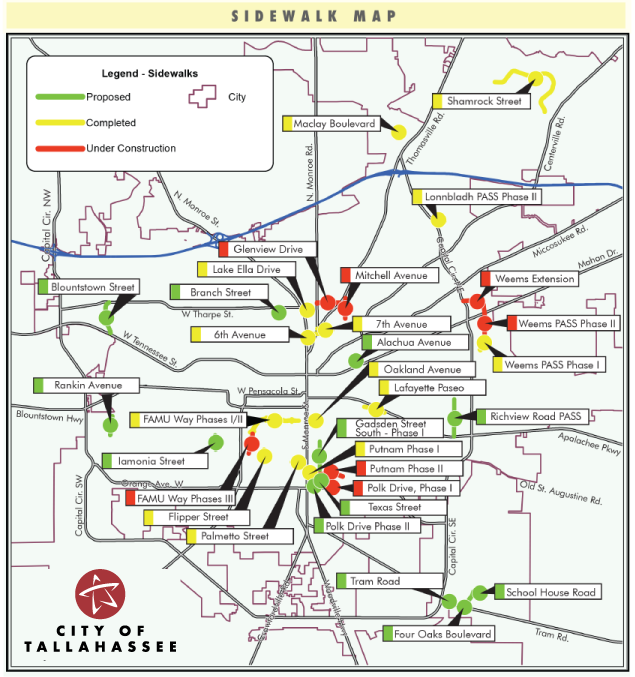 View Full Map of Projects
View Full Map of Projects
4.4 Five-Year Capital Improvement Plan
Return to Top
View the Capital Improvement Plan in OpenGov
The capital improvement plan (CIP) at the City of Tallahassee is a long-term strategy the City’s capital investments.
Click here to view the new facility in the Capital Improvement Plan.
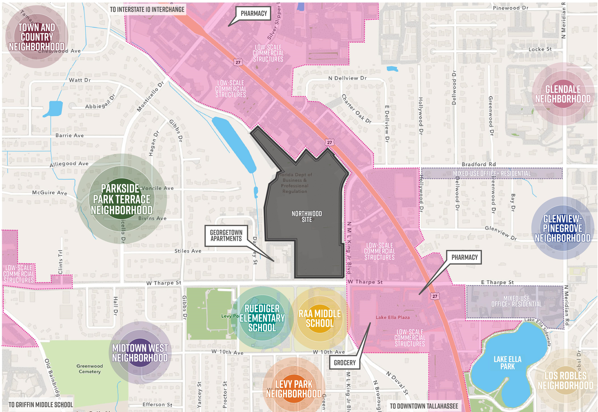
In 12 years, the original structure of Tallahassee Police Department Headquarters will be 100 years old. Due to its age, the building maintenance costs are expected to increase. The department estimates that there are more than $3.4 million improvements needed in the next five years.
A new public safety facility will contain the space needed to serve as a community hub for department sponsored events. A larger facility will provide much-needed training space that could also be utilized to host ongoing community programs like Citizen’s Police Academy, Youth Citizen’s Police Academy, Drug Education for Youth, and Rape Aggression Defense courses for women and children.
In accordance with the site selection process outlined and approved at the March 6, 2019, City Commission meeting, the City solicited and received a total of 68 site proposals from citizens, realtors and property owners. The initial list of 68 sites was evaluated and given a preliminary score based on the criteria approved by the Commission. Eventually, the City selected the Northwood Centre as the home for the future public safety complex.
Within the capital improvement plan, the public safety complex has $2 million for the initial work in 2021, with $33.7 million in 2022 for the bulk of the construction, and $6.7 million in 2023 to finish the complex.
Phase I - Environmental Assessment
Phase II – Design/Preconstruction Services to a Guaranteed Maximum Price (6-12 Months)
- Complete project design
- Preconstruction services
- Community meetings
- Local and minority business workshops
- Workforce plan development
- Guaranteed maximum price
Phase III – Construction to TPD Move-in (18-24 Months)
- Construction
- Construction administration
- Community engagement
- TPD coordination/move-in
Click here to view the new Senior Center in the Capital Improvement Plan.
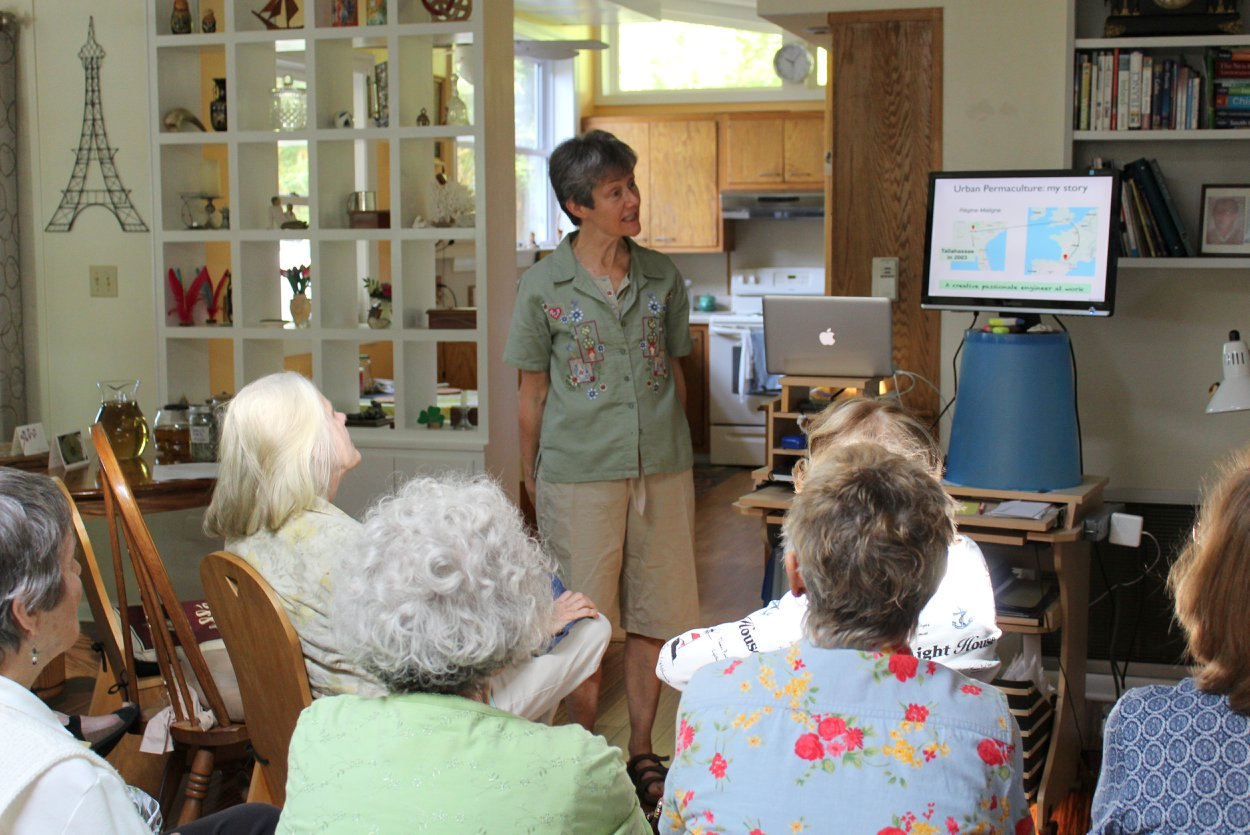
Plans for a Northeast Senior Center located in the Canopy development at Welaunee are underway. The new Senior Center addresses growth as Tallahassee attracts retirees. The Center will enhance the quality of life for the community’s seniors by accommodating their lifelong learning, wellness and fitness, arts and crafts, music, and games.
Multipurpose spaces will foster vibrant social lives and life enrichment by hosting meetings, games, conferences, workshops, and concerts. Seniors will interact in comfortable cafes and coffee shops. Various athletic events will be held at the multisport gymnasium.
A total of $17 million is planned from the 2020 Sales Tax extension for the construction of this new facility. Through its partnership with the
Tallahassee Senior Center Foundation, the City has developed a successful model at the current Senior Center. City staff will work closely with the Foundation to ensure similar success for the new facility.
4.5 Capital Funding Sources
Return to Top
The City’s debt policy identifies debt-financing goals the City seeks to achieve. It provides targets rather than requirements and applies to all debt issued by the City of Tallahassee. The policy also addresses debt structure, debt issuance, debt refunding, debt targets, and other topics.
Bond Proceeds are funds received through bond revenue to pay for water, wastewater, electric, gas, and general government capital infrastructure projects. Bond proceeds in this year’s capital improvement plan include:
- Airport debt
- Bank loans
- 2014 Bonds
- 2018 Bonds
- 2018 Consolidated Utility Services Bonds (CUSB)
- Future bonds for public infrastructure.
General Government is funding received from the general fund, sales tax, gas tax, and intergovernmental funding with Leon County. These sources fund general government capital improvements including public infrastructure, public safety, technology advancements, and traffic infrastructure. General Government funding sources used in this year’s capital improvement plan include:
- 2005 Sales Tax
- Transfers from the General Fund (GGCPA)
- Prior year’s balances for in the Government Capital Improvement Fund
- Sales Tax Construction Fund
Special Funds derive from various sources including internal service capital funds, charges for services dedicated for capital improvements, proceeds from sales, accounts receivable funds, and reserves. Special funds used in this year’s capital improvement plan include:
- 800 MHz Fund
- Aviation facility charges and investment funds
- Electric Accounts Receivable
- Energy Conservation Fund
- Fire Construction Fund, Fleet Reserve Fund
- Water and Sewer System Charges
- Traffic Project A/R Fund
- Water A/R Project Fund.
4.6 Debt Policies and Targets
Return to Top
While the City does not have formal or legal debt limits, it does have policies and targets to ensure that it maintains a double A rating from credit reviewers.
- Maintain sufficiently high bond ratings to assure access to affordable credit and low-borrowing costs
- Ensure intergenerational equity by amortizing debt within the expected useful life of a project or asset
- Coordinate the City’s capital improvement program with its debt management policy to develop a coherent, long-term financing plan for the City’s capital funding needs
- Maintain flexibility for the future financial needs of the City
The City will monitor and report debt ratios annually and at the time of each debt issuance, and strive to structure debt to meet the following targets:
Targets for liquidity, operating margins and debt burden
General Fund
Liquidity: Spendable General Fund Balance of 15% of General Fund expenditures.
Debt Service as a % of Expenditures/Coverage Ratio: Net Debt Service to be less than 10% of General Fund Expenditures
Debt Burden: Debt as a % of Full Market Value in less than 2%
Consolidated Utility System
Liquidity: 150 days cash on hand
Debt Service as a % of Expenditures/Coverage Ratio: Debt Service Coverage of 1.50x or higher
Debt Burden: Debt as a % of Capital Assets less than 50%
Energy System
Liquidity: 210 days cash on hand
Debt Service as a % of Expenditures/Coverage Ratio: Debt Service Coverage of 2.0x or higher
Debt Burden: Debt as a % of Capital Assets less than 60%
Targets for the structure of the City’s debt portfolio at the time of issuance
General Fund
Average Life (Range): 10 - 15 years
Viable Rate (VR): 20%*
Rolling Medium Term Notes (RMTN): 20%*
Combined (VR/RMTN): 30%*
Consolidated Utility System
Average Life (Range): 15 - 20 years
Viable Rate (VR): 25%
Rolling Medium Term Notes (RMTN): 30%cccc Combined (VR/RMTN): 40%
Energy System
Average Life (Range): 15 - 20 years
Viable Rate (VR): 25%
Rolling Medium Term Notes (RMTN): 30%
Combined (VR/RMTN): 40%
*The City shall not exceed the greater of these percentages or $50 million individually for Viable Rate and Rolling Medium Term notes and $90 million combined for Viable Rate and Medium Term Notes at the time of issuance.
Renewal, Replacement, & Improvement (RR&I) funding is cash received from each department’s operating budget that is dedicated for capital improvements. Undesignated balances are accumulated through balances in closed projects, unprogrammed RR&I funding and interest earnings. Those RR&I funding sources used in this year’s budget include RR&I funding from originating from a variety of operating funds:
- Airport
- Electric
- Internal Service Funds
- Gas
- Sewer
- Stormwater
- Water utilities
4.7 Bond Ratings Report Card, Maturity Schedules, and Debt Service
Return to Top
Debt service is funding used to pay interest on outstanding bonds and pay the principal on maturing bonds. The impact of debt on the current budget can be seen through the City’s debt service.
Click here to review debt service by fund in OpenGov.
The City of Tallahassee proudly maintains its double A bond rating from credit agencies. Review the report card below and hover the cursor over the “Hover Here…” section to learn more about each issuance and see maturity schedules.
5.1 Position Summary
Return to Top
Click here for a historical view of positions in OpenGov.
FY21 includes the creation of two new departments: The Department of Community Services and the Office of Diversity and Inclusion. These new departments address and streamline efforts for key elements of the proposed five-year strategic plan.
The Office of Diversity and Inclusion ensures the further development and implementation of the City’s diversity, equity and inclusion initiatives to ensure the City’s workforce is reflective of the community’s demographics. This includes developing a strategic focus on recruiting, retaining and promoting the best and most diverse talent available. Most positions were transitioned from the Human Resources and Workforce Development department.
The City’s national award winning programs TEMPO and the Tallahassee Future Leaders Academy (TFLA) will be housed within the new Department of Community Services. These programs directly combat the impacts of poverty by connecting local youth to education and employment opportunities. These City programs have achieved great success thus far. TFLA provided summer employment to more than 600 local youths from 2015-2018. TEMPO has reached more than 680 disconnected youths since 2017, achieving a zero percent recidivism rate for program participants. The Department of Community Services will also serve in a lead capacity on issues related to homelessness. Positions were transferred from several departments across the City.
In July of 2020, the City Commission enacted Ordinance 20-O-22AA which expanded the authority and responsibility of the Office of the City Auditor to create the City’s Office of Inspector General and designated the City Auditor to serve as the City’s Inspector General.
The Commission approved two new positions in this effort. Those two positions (an investigator position and a complaint intake position) conduct and support investigations of issues that arise from complaints received by the Office of Inspector General through a newly created Fraud Hotline or that may otherwise come to the attention of the Office of Inspector General.
5.2 City Departments
Return to Top
Click a department name below to review its budget page containing expenditures, full-time employee counts, and performance for strategic targets.
5.3 Performance Dashboard
Return to Top
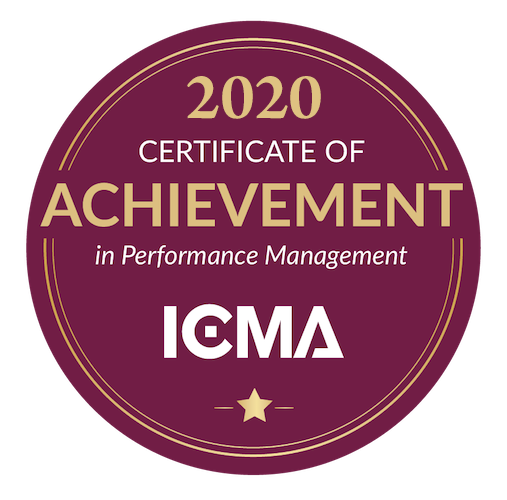 Click here to review the City’s performance dashboard. This page demonstrates progress towards the strategic plan’s objectives. Click here to review the City’s performance dashboard. This page demonstrates progress towards the strategic plan’s objectives.
5.4 Florida Benchmarking Consortium
Return to Top
The City of Tallahassee is a founding member of the Florida Benchmarking Consortium (FBC). It is the largest intra-state government benchmarking group in the United States. While the comparison numbers are older due to the timing of data collection, they still allow for benchmarking against peers.

GFOA Budget Award
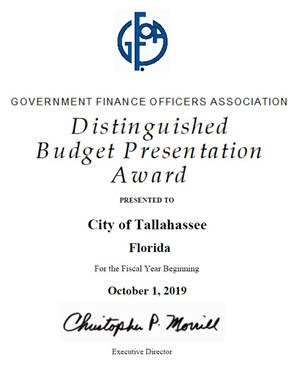 The City of Tallahassee was awarded the Distinguished Budget Presentation Award by the Government Finance Officers Association of the United States and Canada (GFOA) for the fiscal year 2020 budget. This is the 34th year the City of Tallahassee has received this award. The award supports the budget presentation is of a high quality and reflects guidelines set by the National Advisory Council on State and Local Budgeting. The City of Tallahassee was awarded the Distinguished Budget Presentation Award by the Government Finance Officers Association of the United States and Canada (GFOA) for the fiscal year 2020 budget. This is the 34th year the City of Tallahassee has received this award. The award supports the budget presentation is of a high quality and reflects guidelines set by the National Advisory Council on State and Local Budgeting.
Special Thanks
Office of Economic Vitality
Office of Communications
ACCRUAL BASIS - A basis of accounting in which transactions are recognized at the time they are incurred, as opposed to when cash is received or spent.
AD VALOREM TAXES - Taxes levied on both real and personal property according to the property's valuation and the tax rate.
ADVERTISING - Costs for legal advertisements, posters, publication of public notices, resolutions, ordinances, and bid invitations.
APPROPRIATION - A legal authorization to incur obligations and to make expenditures for specific purposes.
AVAILABLE (UNDESIGNATED) FUND BALANCE - This refers to the funds remaining from the prior year which are available for appropriation and expenditure in the current year.
BAD DEBT - The estimated amount of accounts owed to the city (receivables) that will not be collected during the year. This includes utility accounts, accident damage repair accounts, and other miscellaneous account receivables which are deemed uncollectible.
BALANCED BUDGET- The revenues must equal the expenditures. Florida Statute 166 reads, “The amount available from taxation and other sources, including balances brought forward from prior fiscal years, must equal the total appropriations for expenditures and reserves."
BOND - Evidence of the local government's obligation to repay a specified principal amount on a future maturity date, plus interest. Bonds are issued to obtain money for capital projects. Revenue bonds pledge a particular source of revenue usually generated by the new asset as the means of repayment.
BOND REFERENDUM - The process by which voters approve or disapprove a proposed general obligation bond issue.
BOND REFINANCING - The payoff and re-issuance of bonds to obtain better interest rates and/or bond conditions.
BOND RESOLUTION - The document by which the local government authorizes the sale of bonds.
BUDGET - The formal allocation of resources (dollars) to various programs with the intent of performing a service.
BUDGETARY BASIS - The basis of accounting used to estimate financing sources and uses in the budget. This generally takes one of three forms: GAAP, cash, or modified accrual.
BUDGET CALENDAR - The schedule of key dates that the city follows in the preparation and adoption of the budget.
CAPITAL ASSETS - Assets of significant value and having a useful life of several years. Capital assets are also called fixed assets.
CAPITAL BUDGET - The appropriation of bonds or operating revenue for improvements to facilities and other infrastructure.
CAPITAL IMPROVEMENTS (Capital Projects) - Expenditures related to the acquisition, expansion, or rehabilitation of an element of the government's physical plant; sometimes referred to as infrastructure.
CAPITAL IMPROVEMENTS PLAN (CIP) - A plan for capital outlay to be incurred each year over a fixed number of years to meet capital needs arising from the government's long-term needs.
CAPITAL OUTLAY - Fixed assets which have a value of $750 or more and have a useful economic lifetime of more than one year or assets of any value if the nature of the item is such that it must be controlled for custody purposes as a fixed asset.
CAPITALIZED OVERHEAD - Charges assessed to capital projects for administrative and labor related services.
CAPITALIZED WAGES – Direct salaries or wages of city employees which are paid from funding appropriated in the capital budget.
CASH BASIS - A basis of accounting in which transactions are recognized only when cash is increased or decreased.
CITY CONTINGENCY - Amount budgeted to meet unexpected operating expenditures that occur during the current year.
COST OF GOODS SOLD (COGS) FUEL STORES - Fuel purchased by the city garage and then resold by the city for use in the city fleet.
COST OF GOODS SOLD (COGS) MATERIALS STORES - The cost of materials and supplies which are resold by the city. This includes articles for resale by the city garage parts division, the city warehouse, and golf courses.
COST OF GOODS SOLD (COGS) NATURAL GAS - This account represents the cost of natural gas purchased by the city electric department for use to generate electricity and natural gas sold by the gas utility department to gas customers.
COLLECTIVE BARGAINING AGREEMENT - A legal contract between the city and representatives of a recognized bargaining unit for specific terms and conditions of employment (e.g., hours, working conditions, salary, fringe benefits, and matters affecting health and safety of employees).
CONSUMER PRICE INDEX (CPI) - A statistical description of price levels provided by the U.S. Department of Labor. The index is used as a measure of the increase in the cost of living (i.e., economic inflation).
CONTRACTUAL SERVICES - Services rendered to the city by private firms, individuals, or other governmental agencies. Examples include maintenance agreements and professional consulting services.
CURRENT SERVICE LEVEL (CSL) - A level of service which is the same as the current year.
DEBT SERVICE - The amount of money needed to 1) pay interest on outstanding bonds, 2) pay the principal on maturing bonds, and 3) make contributions to a sinking fund for term bonds, debt service is calculated on a fiscal year basis.
DEDICATED TAX - A tax levied to support a specific government program or purpose.
DEFICIT - The excess of an entity's liabilities over its assets or the excess of expenditures or expenses over revenues during a single accounting period.
DEPARTMENT - Organizational unit of government, which is functionally unique in its delivery of services.
DEPRECIATION - Expiration in the service life of capital assets attributable to wear and tear, deterioration, action of the physical elements, inadequacy, or obsolescence.
EMPLOYEE BENEFITS - Costs incurred by the city for pension, health insurance, and other benefits provided to employees.
ENCUMBRANCE - The commitment of appropriated funds to purchase an item or service. To encumber funds means to set aside or commit funds for a specified future expenditure. ENTERPRISE FUND - A fund established for services that are predominantly self-supported by user fees and charges.
EQUIPMENT SUPPLIES - The cost of materials and supplies used in conjunction with the operation of machinery and equipment.
EXPENDITURE - The payment of cash or the transfer of property or services for the purpose of acquiring goods and/or services or settling a loss.
EXPENSE - Charges incurred (whether paid immediately or to be paid at a later date) for operations, maintenance, interest, or other charges.
FISCAL YEAR - A twelve-month period designated as the operating year for accounting and budgeting purposes in an organization. The fiscal year for the City of Tallahassee is October 1 through September 30.
FULL TIME EQUIVALENT (FTE) - A method of measuring the number of authorized employees based on a full-time equivalent of 2,080 hours per year.
FUND - A fiscal/accounting entity that is established to accomplish specific objectives and carry out specific activities. Examples: debt service fund, capital projects fund, and special assessment fund.
FUND BALANCE - The excess of the assets of a fund over its liabilities, reserves, and carryover.
GENERAL GOVERNMENT CAPITAL IMPROVEMENT FUND (GG/CIF) – Undesignated capital funding that serves as a contingency for all capital funding sources in the general government.
GENERAL GOVERNMENT CAPITAL PROJECT ACCOUNT (GG/CPA) – Funding provided from the general fund operating budget to support general government capital projects.
GENERALLY ACCEPTED ACCOUNTING PRINCIPLES (GAAP) - Uniform minimum standards for financial accounting and recording, encompassing the conventions, rules, and procedures that define accepted accounting principles.
GENERAL FUND - The fund used to finance all non- enterprise operations of local government.
GOAL - A statement of broad direction, purpose, or intent based on the needs of the community. A goal is general and timeless. Glossary of Key Terms
GRANT - A contribution by a government or other organization to support a particular function. Grants may be classified as either operational or capital, depending upon the intended usage of the grant proceeds.
INCREASED SERVICE LEVEL (ISL) - A change in service delivery which exceeds the current level of service.
INDIRECT COST - A cost necessary for the functioning of the organization as a whole that cannot be directly assigned to one service.
INFRASTRUCTURE - The physical assets of a government (e.g., streets, water works, sewer lines, public buildings, and parks).
IN LIEU OF TAXES - Income received by local governments to compensate for the loss of revenue from tax-exempt property.
INSURANCE - Costs associated with workers’ compensation claims including administration and medical costs, dishonesty bonds, and property and casualty insurance premiums.
INTER-FUND TRANSFER - Legally authorized transfers from a fund receiving revenue to a fund through which resources are to be expended.
INTEREST EXPENSE - Cost of utilizing borrowed funds (long-term debt).
INTERGOVERNMENTAL REVENUE OR SHARED REVENUE - Tax/fee money collected by one level of government and distributed to another level of government.
INTERNAL SERVICE FUNDS - Funds established to distribute costs to user departments for administrative services provided by another unit of government, such as data processing or insurance funded from a central pool.
INTRA-FUND TRANSFER - Legally authorized transfers within a fund.
LEVY - To impose taxes for the support of government activities.
LONG-TERM DEBT - Debt with a maturity of more than one year after the date of issuance.
MILLAGE RATE - The rate in mills (1 mill = 1/1000 of a dollar or .001) at which property is taxed.
MISSION STATEMENT - A formal summary of the aims and values of a company or organization.
OBJECTIVE - A specific/quantifiable statement of what the city, a department, or a unit expects to accomplish in a fiscal year.
OFFICE EQUIPMENT - Furniture, fixtures and equipment with an initial cost of $750 or more.
OPERATING REVENUE - Funds received by the city as income to pay for on-going operations, including taxes, fees, interest earnings, and grant revenues.
OPERATING EXPENSES - The cost for personnel, materials, and equipment required for a department to function.
ORDINANCE - Legislation enacted by the City Commission which has the full force and effect of law within the municipal boundaries.
ORGANIZATIONAL CHART - A graphic representation of the structure of an organization, showing the relationships of the positions or jobs within it.
OTHER SALARY ADJUSTMENTS - Items of employee compensation that are not directly related to the regular or overtime hours worked.
OVERTIME - Compensation to eligible employees for hours worked beyond 40 hours within a specific workweek.
PAY-AS-YOU-GO BASIS - A term used to describe a financial policy by which capital projects (infrastructure) are financed from current revenues rather than through borrowing.
PENSION CURRENT - City contribution to employee pension plan for participating employees.
PENSION MATCHED ANNUITY PENSION PLAN (MAPP) - City contribution to employee matched annuity pension plan for participating employees.
PER CAPITA COST - Cost per unit of population to provide a particular service in the community.
PERFORMANCE INDICATORS - Specific quantitative and qualitative measures of work planned by specific departments or programs.
PERFORMANCE MEASURE - Data collected to determine how effective or efficient a program is in achieving its objectives (performance indicators).
PRIOR-YEAR ENCUMBRANCES - Unpaid, legally binding obligations from previous fiscal years in the form of purchase orders, contracts, or salary commitments, which are chargeable to a prior appropriation and for which a part of that appropriation is reserved.
PRO-FORMA - The financial assumptions or projections for the 14 operating funds.
PROGRAM - A collection of activities directed at accomplishing similar objectives.
PROGRAM PERFORMANCE BUDGET - A method of budgeting whereby the services provided to the residents are broken down in identifiable service or performance units and funding is appropriated for a given level of service or units.
PROPERTY TAX - An ad valorem tax based on the fair market value of real property (land and buildings) and personal property (business equipment). Fair market or "just" value is determined by the county property appraiser as of January 1 of each year, under the guidelines of Chapter 193, Florida Statutes.
REDUCED SERVICE LEVEL (RSL) - A level of program service which is less than that of the current year.
REPAIRS, REPLACEMENTS & IMPROVEMENTS (RR&I) - The portion of the cost of fixed assets (excluding land) charged as an expense during a particular period due to expiration in service life, attributable to wear and tear through use and lapse of time, obsolescence, inadequacy, or other physical or functional cause.
RESERVE - An account used either to set aside budgeted revenues that are not required for expenditure in the current budget year or to earmark revenues for a specific future purpose.
RESERVE TRANSFER - Those payments necessary to adequately meet the current requirements for reserve funds.
RESOLUTION - A special or temporary order of a legislative body that requires less legal formality than an ordinance or statute.
REVENUE - Money that flows into the local government. It is recurring if it is received on a consistent basis (e.g., sales taxes and property taxes) and nonrecurring if it is received irregularly (e.g., federal and state grants). The four main types of local revenue are taxes, user fees, licenses and permits, and intergovernmental revenue. ROLLED-BACK MILLAGE RATE - A tax rate, which applied to the current year’s tax base, will bring in the same amount of taxes as levied the prior year. Newly constructed property or other property added to or deleted from the prior year‘s base is excluded.
SALARIES AND WAGES - Regular weekly and monthly compensation for work performed as defined by the personnel pay scale for position classifications.
SERVICE LEVEL - Services or products which comprise actual or expected output of a given program.
SOCIAL SECURITY - City contribution to employee Social Security for participating employees.
SPECIAL ASSESSMENT - A tax on property owners who receive a benefit not received by all other taxpayers.
SPECIAL REVENUE FUND- Special revenue funds are used to account for and report the proceeds of specific revenue sources that are restricted or committed to expenditure for specified purposes other than debt service or capital projects.
SUPPLEMENTAL APPROPRIATION - An additional appropriation made by the governing body after the budget year has started.
TAX BASE - The total taxable value of property within the local government's legal boundaries.
TAX ROLL - The master list of the assessed value of all taxable property within the government's jurisdiction. The list is certified to all local taxing authorities by the property appraiser by July 1 of each year.
TAXABLE VALUE - The assessed value of property less exemptions.
TAXES - Compulsory charges levied by a government for the purpose of financing services for the common benefit of the people.
TEMPORARY WAGES - Seasonal or temporary employees' compensation computed on hourly or monthly rates.
TERM BONDS - Bonds comprising a large part or all of a particular bond issue which come due in a single maturity.
TRAVEL AND TRAINING - The cost of attending meetings, conferences, short conferences, etc.
TRUST FUND - A fund established to collect and distribute monies for a specific function or operation.
UNCLASSIFIED EQUIPMENT - New equipment not otherwise classified, including air conditioners, traffic signals, field stripers, water fountains, etc. This includes all tangible personal property to be purchased which has a value of $1,000 or more. This equipment, as with all capital equipment, is subject to inventory control.
UNCLASSIFIED PROFESSIONAL FEES - The cost of personnel service under expressed or implied contracts to individuals, companies, or corporations engaged as a contractor to perform a specific professional or expert service for the city.
UNCLASSIFIED SUPPLIES - Consumable materials and supplies used in conjunction with projects or operations not specifically classified.
AHAP Affordable Housing Assistance Program
CAD Computer Aided Dispatch
CDA Consolidated Dispatch Agency
CDBG Community Development Block Grant
CHSP Community Human Service Partnership
CIP Capital Improvement Plan
CIS Customer Information System
COCA Council on Culture and Arts
COPS Community-Oriented Policing Services
CPI Consumer Price Index
CRA Community Redevelopment Agency
CUSB Consolidated Utility System Bond
DEP Department of Environmental Protection
DIA Downtown Improvement Authority
DRI Development of Regional Impact
EAP Employee Assistance Program
EEO Equal Employment Opportunity
EOC Emergency Operations Center
ERU Equivalent Residential Unit
EWD Equity and Workforce Development
FAA Federal Aviation Authority
FAMU Florida Agricultural and Mechanical University
FDEP Florida Department of Environmental Protection
FDOT Florida Department of Transportation
FEMA Federal Emergency Management Agency
FERC Federal Energy Regulatory Commission
FHWA Federal Highway Administration
FSU Florida State University
FTA Federal Transportation Administration
FTE Full-time Equivalent
GASB Governmental Accounting Standards Board
GF General Fund
GG/CIF General Government/Capital Improvement Fund
GG/CPA General Government/Capital Projects Account
GIS Geographic Information Systems
HOME Home Investment Partnership Program
HUD Housing and Urban Development
IAFF International Association of Firefighters
IRP Integrated Resource Planning
ISO Insurance Service Office
ISS Information Systems Services
JARC Juvenile Assessment Receiving Center
KWH Kilowatt Hour
LLEB Local Law Enforcement Block Grant
MAPP Matched Annuity Pension Plan
MGD Million Gallons Daily
MSA Metropolitan Statistical Area
MW Megawatt
MWBE Minority and Women Business Enterprise
NPDES National Pollution Discharge Elimination System
OEV Office of Economic Vitality
PASS Pedestrian and Street Safety
PBA Police Benevolent Association
PETS Permit Enforcement Tracking System
PLACE Planning, Land Management & Community Enhancement
PSC Public Service Commission
PUD Planned Unit Development
RFP Request for Proposal
RR&I Repairs, Replacements, and Improvements
SCADA System Control and Data Acquisition
SHIP State Housing Initiative Plan
SPRP Stormwater Pollution Reduction Program
TCC Tallahassee Community College
6.3 Resolutions
Resolution Budget
Resolution Millage
6.4 Online Budget Feedback
Thank you for reading the City of Tallahassee’s budget. To foster its continuous improvement, please complete a short survey to provide some feedback. Click here to complete the survey.
TAKE THE FY2021 BUDGET FEEDBACK SURVEY
6.5 Form of Government
The City of Tallahassee uses the council-manager form of government with a “leadership mayor”.
The mayor, whose role includes presiding at city commission meetings, serving as the ceremonial head of the government, serving as the official head of the City for civil processes, and executing legal documents. The mayor is also considered the political leader of the government and is involved in dialogues and negotiations with county, state, and federal officials. Tallahassee's mayor is not considered a "strong mayor" because the position has no veto power and represents only one vote on the city commission.
The mayor and city commission serve as the governing body of the City. They set policies and rules by which the City is operated. They also establish goals and tax rates. The mayor and city commissioners each serve four-year terms. The terms of office are staggered, with elections held in even-numbered years (two seats during Presidential election cycles, and two others - plus the mayor - in mid-term election cycles).
Regular city commission meetings are typically held twice a month to conduct city business and provide citizens with an opportunity to participate in the government process. In addition, the commission meets for workshops on specific issues. The city commission also appoints four officers to administer the duties of the city.
Four officers, appointed by the city commission, handle the administration of the City: city manager, treasurer-clerk, city attorney, and city auditor. The city manager oversees most City departments and administers the daily operation of the City. The treasurer-clerk administers records, taxation, and the City treasury. The city attorney serves as the City's legal advisor, prepares contracts, and represents the City in legal issues. The auditor reviews the policies, procedures, and accounting of City operations.
The independent Ethics Board was created in accordance with voters' approval of a City Charter amendment during the November, 2014 general election. Approval of the referendum created a 7-member Board comprised of 5 seats designated for appointment by local entities including the City Commission, Public Defender, State Attorney for the Second Judicial Circuit, President of Florida State University, and President of Florida A & M University. The referendum required these initial 5 Board members to select two additional members to bring the Board to a full complement of 7 members.
The independent Ethics Board and Ethics Officer provide ethical oversight of the City’s elected and appointed officials. Click here to visit their website.
6.6 Supplemental Demographic and Economic Information
This section offers additional information and visualizations related to the City’s community. It also describes economic trends that impact the City’s budget. For more information on these trends, please visit the Tallahassee-Leon County Office of Economic Vitality’s website.
The Tallahassee Metropolitan Statistical Area (MSA) is used frequently, which includes all of Gadsden, Jefferson, Leon and Wakulla counties. The City serves as an urban hub to these areas and many in outside communities work and shop within the City’s limits.
The example graph below shows the growth of median sales price of homes in Tallahassee, Leon County, and the State of Florida.
Educational Attainment
Tallahassee citizens are some of the most educated in the State of Florida. In 2018, 48% of its citizens had a bachelor’s degree or higher compared to 29% for the State as a whole.
See more...
Population by Age
The City boasts a large student population with 20 to 24 year-old residents representing the largest 4-year age group. With the areas around the universities resembling college towns, the student populations impact the City’s statistics from poverty to homeownership.
See more...
Growth by Age Group
While students may represent a large single group, the fastest growing age group are those from 65 to 79. This is in part due to State-wide trends but also thanks to the Choose Tallahassee campaign.
See more...
Crime Index
While crime has been a point of concern for the community, it’s important to note that the crime rate has been in decline. Since 1995, violent crime has declined by over 50%.
See more...
Electric Service Points
The City’s electric utility serves more customers each year, which represents both growing revenues and costs for the Electric Fund. Regular spikes in the early fall are likely due to students moving in and out of properties in those months.
See more...
Tallahassee Airport Passengers
While the Tallahassee Airport does much more than serve passenger aircraft, it’s an important trend to monitor for the Aviation Fund. The tremendous impact of COVID-19 on air travel also impacted the City’s airport. This will be an important trend to monitor for the City and its Aviation Fund.
See more...
Homeownership Rate
Leon County has a lower homeownership rate than many other counties and the State of Florida overall. This is due to the large student population referenced earlier.
See more...
Taxable Sales
Taxable sales affect the revenue-sharing with the State of Florida. Since 2010 there’s been a steady increase in the taxable sales within the Tallahassee MSA.
See more...
Foreclosures
In this recession environment, it will be important to monitor local foreclosures. Stimulus from the federal government delayed the impacts late mortgage payments, but foreclosures are expected to rise into 2021.
See more...
|